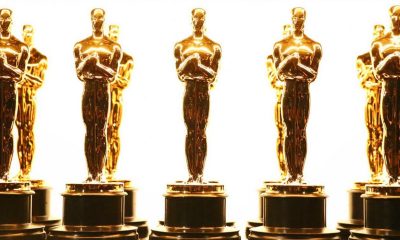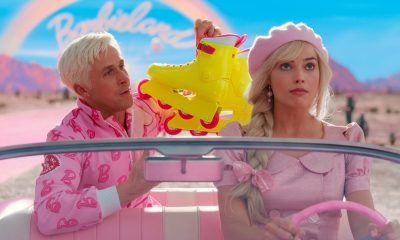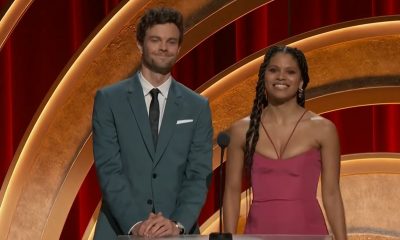Arts & Entertainment
Out actor relishes ‘Superstore’ role
Nico Santos says playing gay and Filipino is double blessing
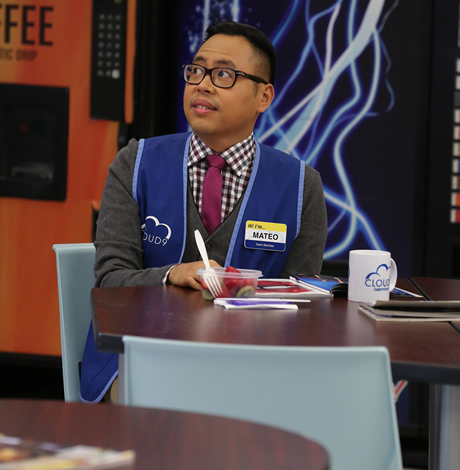
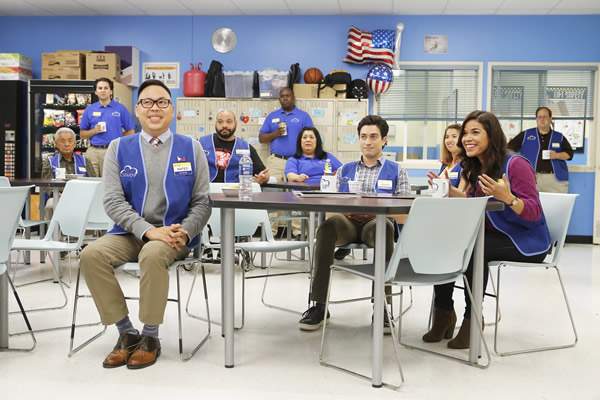
Nico Santos, front left, as Mateo in ‘Superstore.’ (Photo by Chris Haston; courtesy NBCUniversal)
While big-box retail store customers have their own set of problems, such as navigating the endless aisles, employees dwell in their own retail hell. “Superstore” is NBC’s latest workplace comedy from the executive producer of “The Office” and stars America Ferrera (Amy) and D.C. native Ben Feldman (Jonah). Employee frustrations are amplified at the fictional Cloud 9, a Walmart-esque superstore, such as assisting irate customers and accidentally marking electronics at $0.25 instead of 25 percent off causing a riot in the store.
Mateo, played by Nico Santos, 37, is a newly hired Cloud 9 associate who won’t let the annoyance of retail, or anyone, stand in the way of his ambition to succeed at work. Mateo also happens to be a gay Filipino man and undocumented illegal immigrant.
Santos and Mateo have a lot in common — Santos is also a gay Filipino man, but is launching a professional acting career instead of working the sales floor. Born and raised in the Philippines, Santos immigrated to the United States at 15 years old and has been immersed in the performing arts ever since.
Speaking to the Washington Blade in between filming the show’s Halloween episode, Santos talked the horrors of retail, Mateo’s upcoming love interest and how wearing chaps might be the hardest part of being a cowboy.
WASHINGTON BLADE: How did you get into acting?
NICO SANTOS: I was in a few high school plays and musicals and I majored in theater as well. But I kind of deviated from that and my background mostly is in stand-up comedy. When I lived in San Francisco, I started stand up comedy there. I moved to Los Angeles six years ago doing stand up and just trying to get my half-hour Comedy Central special going and trying to get my name into comedy clubs here. But I auditioned for the CBS Diversity Showcase, which is an industry showcase here that’s presented to agents and casting directors. And that’s how I got my agent. I started going out on auditions and started booking small roles here and there. Then “Superstore” came along and it’s been my first professional acting job. I still can’t believe that all of this is happening. It’s a new world to me.
BLADE: When you first auditioned for “Superstore” did you immediately connect with the character of Mateo?
SANTOS: I did. Mateo was originally written as a straight, Latino guy. Sort of like a tough gangster guy. But I was reading the text of the materials that were sent to me and he comes from the same sort of immigrant background and had a large family, and I came from the same background. So it was something I was drawn to. But I was reading the text and I was thinking to myself there’s no way I can play a butch, Latino gangster. I can play butch, but not that butch. So I just kind of scanned the text and was like, “I can totally picture a shady queen saying these words.” So I kind of made it my own, and they loved my take on the character and changed the character to be a gay Filipino.
BLADE: That’s a rare representation on TV. How do you feel about that?
SANTOS: I’m so happy that I get to be a part of this new way of Asian representation that’s happening right now. The last couple years you’ve had shows like “Fresh Off the Boat” and “Dr. Ken” and now “Superstore.” But certainly the representation of Asian Americans and Asians in general has been a lot better these last couple of years. But it is so rare to see a gay Filipino character in television. I’ve talked to all my other Filipino actor friends and a lot of times we get asked to play other Asian parts. Like the auditions we go to we get asked to play Japanese or Chinese or Korean. We never get to play Filipino, which still boggles my mind because we are one of the largest Asian minorities in the United States, but we’re hardly represented in the media. I’m definitely so happy that I get to represent not only the LGBT side of my community, but the whole Filipino community as well.
BLADE: “Superstore” is a workplace comedy comparable to other shows like “The Office” and “Parks and Recreation.” Do you ever feel any pressure to live up to that?
SANTOS: Yes and no. Obviously I would love for our show to have such a long and successful run like “The Office” and “Parks and Recreation.” I certainly hope that’s in our future. I know we’ve been compared to those shows, but I think we are very unique and have found our own voice early on. I will say the one main difference that separates us from those shows is not everyone has worked in an office. But everybody has been in one of these stores whether you have been behind the register or in front of the register. It’s something we’ve all experienced. I think that’s why it’s struck a chord with everybody. Not only do you see or recognize these characters and everyone in the cast but it’s something you experience every day. You have to go to a store every day to get your necessities.
BLADE: Have you ever worked in a big-box store like Cloud 9?
SANTOS: I’ve never worked in a big-box store, but I have plenty of retail experience. When I used to live in San Francisco and started doing stand up comedy, my day job was working retail. But I worked in high-end luxury retail. So I worked at Neiman’s and Jimmy Choo and Dior. Honestly once I started working on this show, I was able to draw on that retail experience and use it. I was like, “All eight years of working retail finally paid off.” Because it doesn’t matter whether you’re selling $0.99 toilet paper or a $10,000 gown, it’s all the same crazy customers that you have to deal with.
BLADE: How would you compare yourself and Mateo as employees?
SANTOS: There’s a lot of me in Mateo and that’s why I love playing him. I’m maybe not as backstabby. Mateo will backstab anybody who gets in his way. When I’m working on the job I want to do it well and I kind of obsess over it. I always make sure that the job that I take is something that I enjoy. So there’s definitely a whole lot of me in Mateo.
BLADE: Being an out, gay actor, what’s it like representing the LGBT community on a show that has such a wide reach as “Superstore”?
SANTOS: I’m really happy to do that. LGBT representation has sort of changed throughout the years. With shows like “Will and Grace,” you have Will who is sort of like a more masculine character, but the character Jack got a lot of criticism for being flamboyant. And now a character like mine who is more on the feminine side I think even like five years ago would have been criticized like, “Oh, you guys are playing a stereotype.” To me, I always get so annoyed when people criticize gay men for being feminine. Being feminine is not a bad thing. That’s part of the spectrum of the LGBT community. Just because a gay man is feminine that’s not a stereotype. Feminine gay men exist, and they need to be represented. Especially for me, I am feminine in real life and not having seen those characters before as just a regular guy on television I think is important.
BLADE: What can you tell us about Mateo’s upcoming love interest this season?
SANTOS: It’s great because how it comes about is really unexpected. For Mateo, he’s still figuring out does he like this guy, how is this going to benefit him. There’s always that question in the back of his head of what’s in it for him. I think the storyline is really great. My love interest is being played by this great actor Michael Bunin who is so funny and so charming. I think audiences will get a real kick out of it.
BLADE: Any sneak peaks about the Halloween episode that you’re filming?
SANTOS: All I can tell you right now is that I’m a cowboy for this episode and I’ve been wearing cowboy boots and chaps all day. After doing all my scenes in chaps and cowboy boots, I have a newfound appreciation for cowboys. I will certainly be watching “Brokeback Mountain” with a completely different lens now.
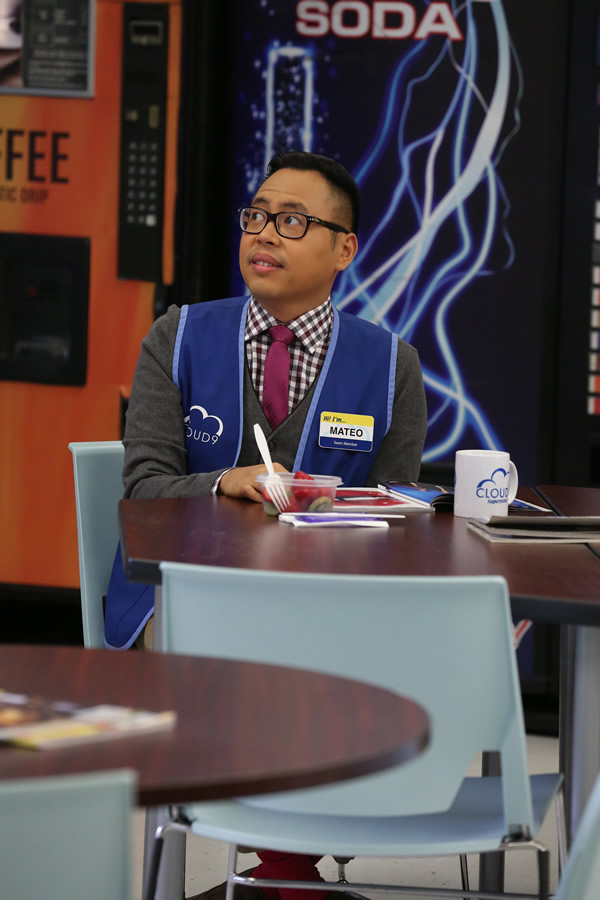
Nico Santos as Mateo in ’Superstore.’ Though he says he’s less ‘backstabby’ in real life, Santos identifies with his character. (Photo by Chris Haston; coutesy NBCUniversal)
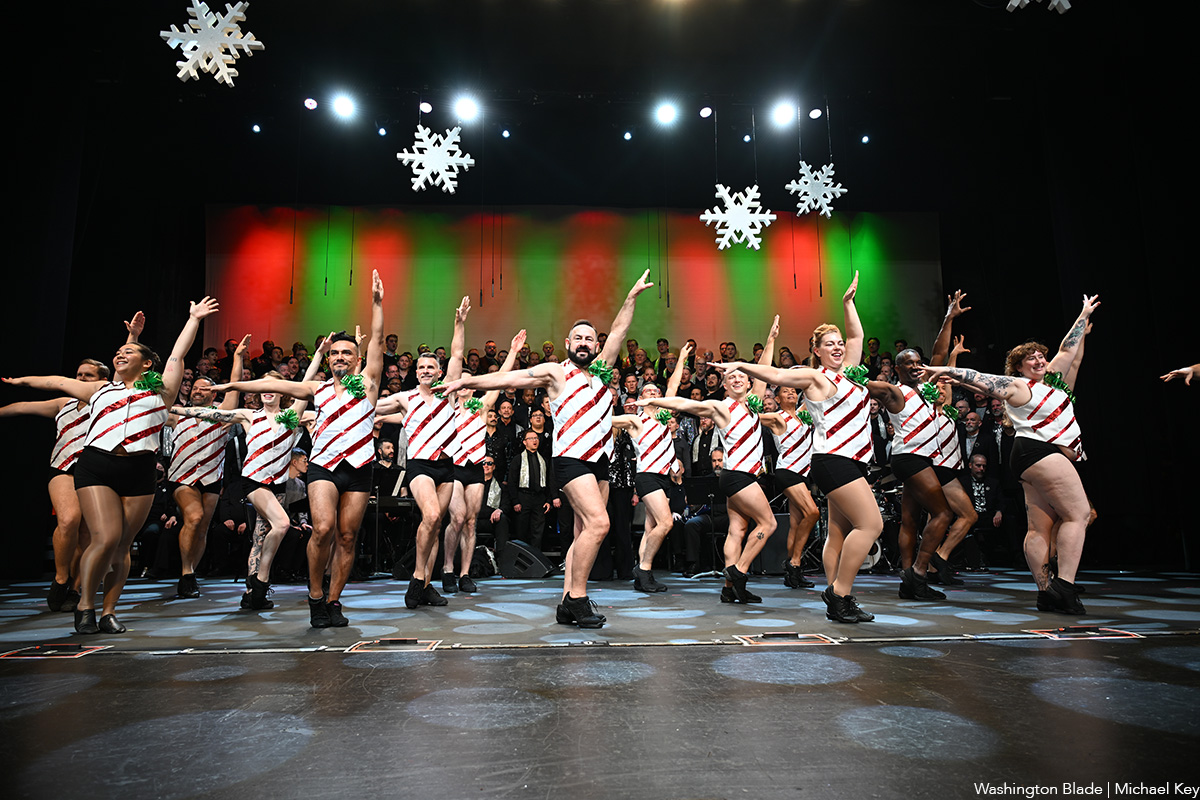
The Gay Men’s Chorus of Washington perform “The Holiday Show” at Lincoln Theatre (1215 U St., N.W.). Visit gmcw.org for tickets and showtimes.
(Washington Blade photos by Michael Key)
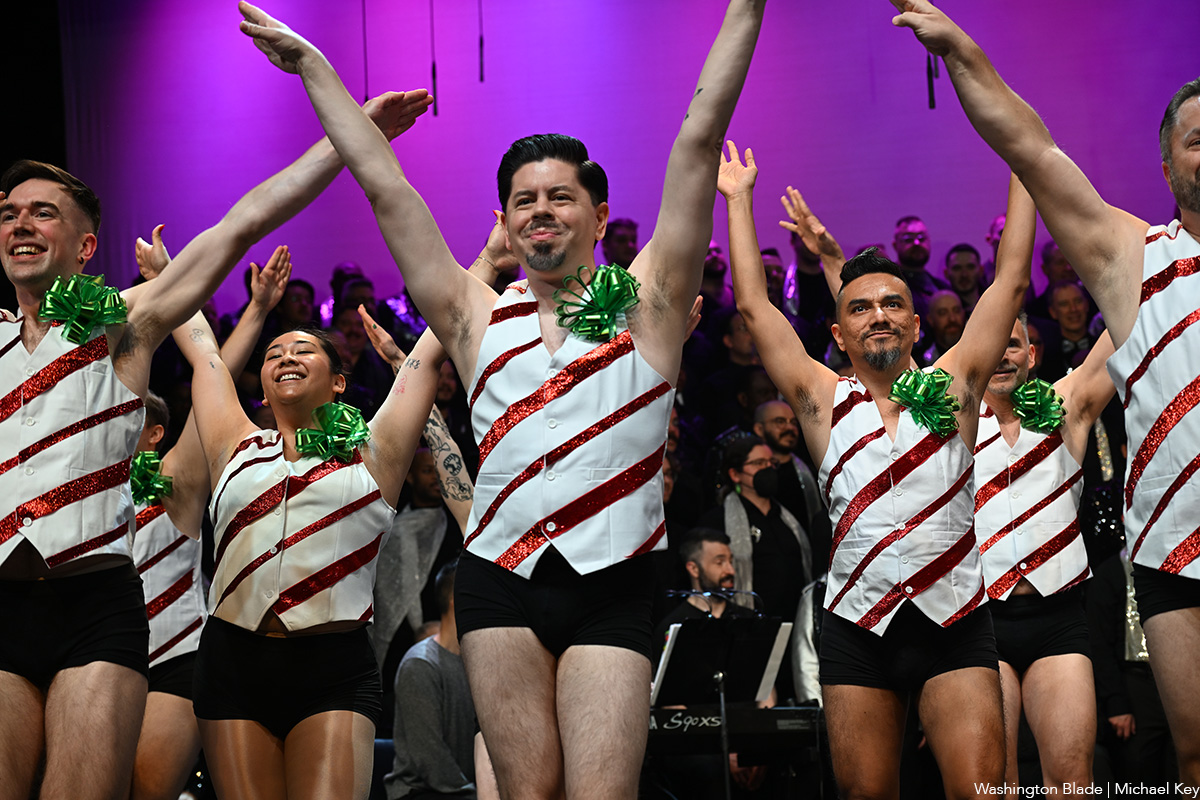


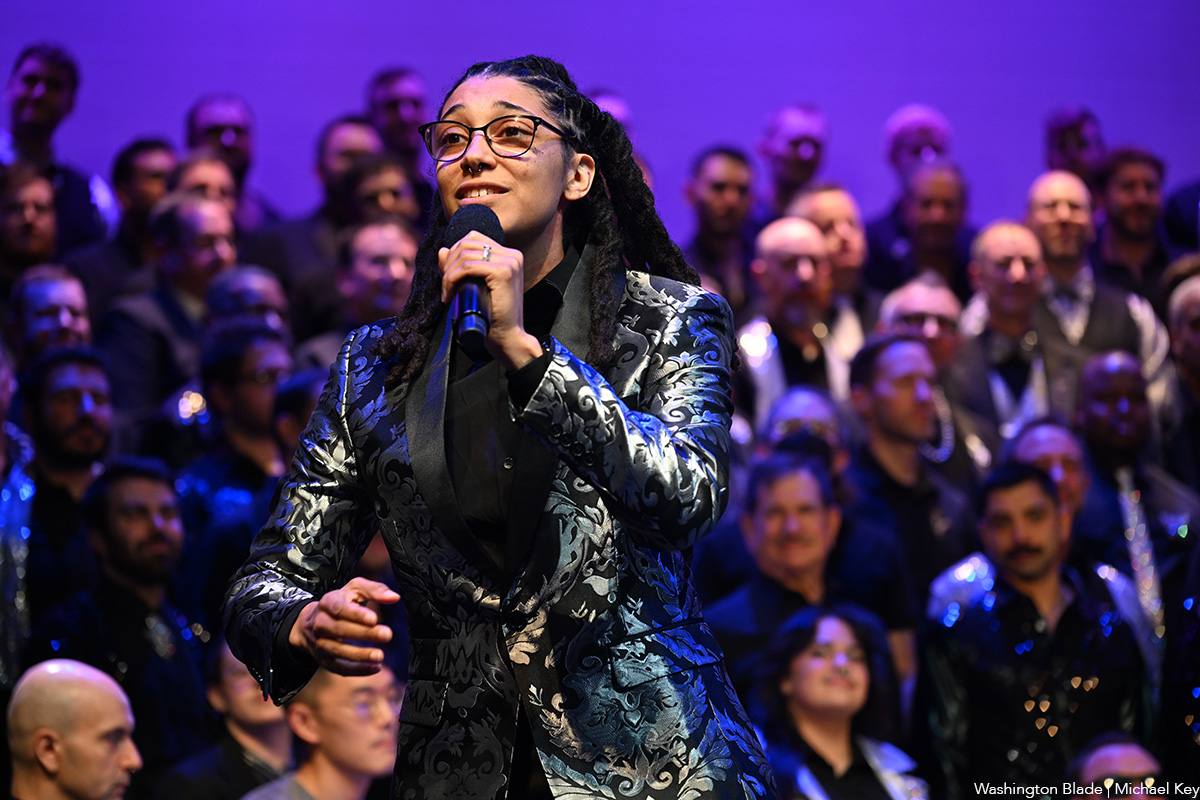
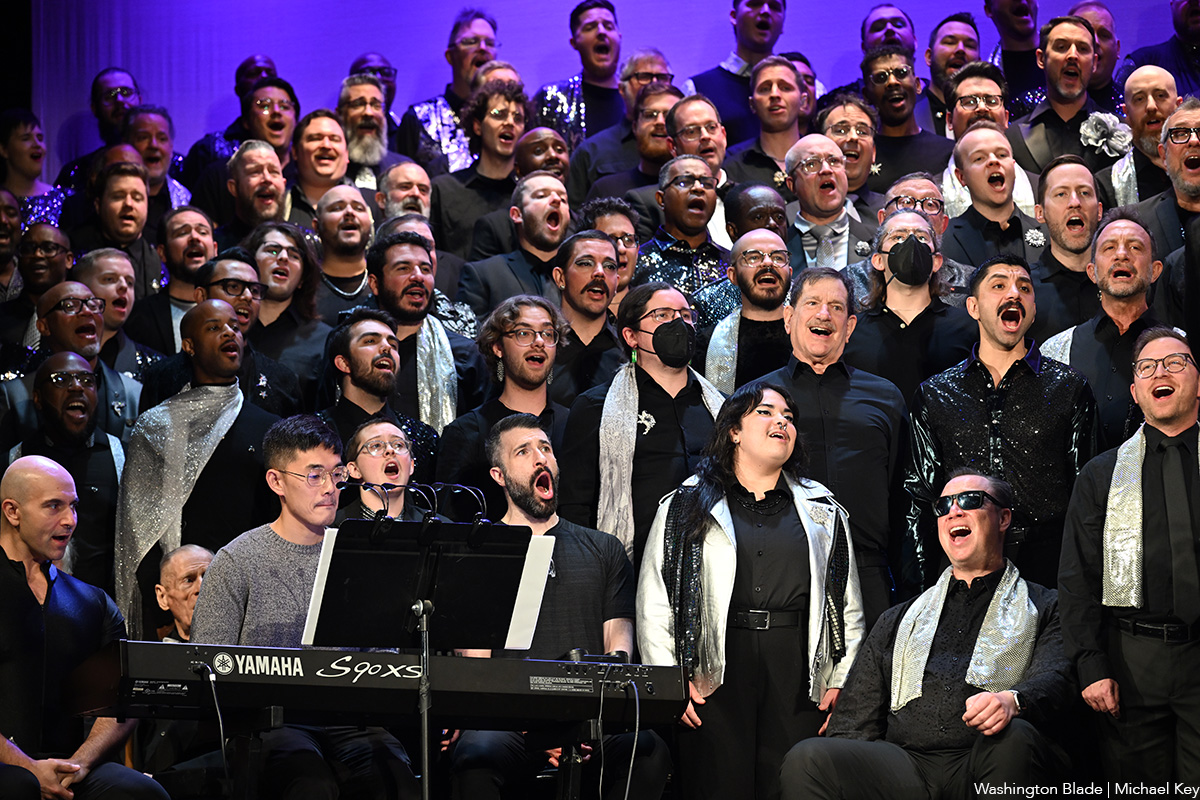
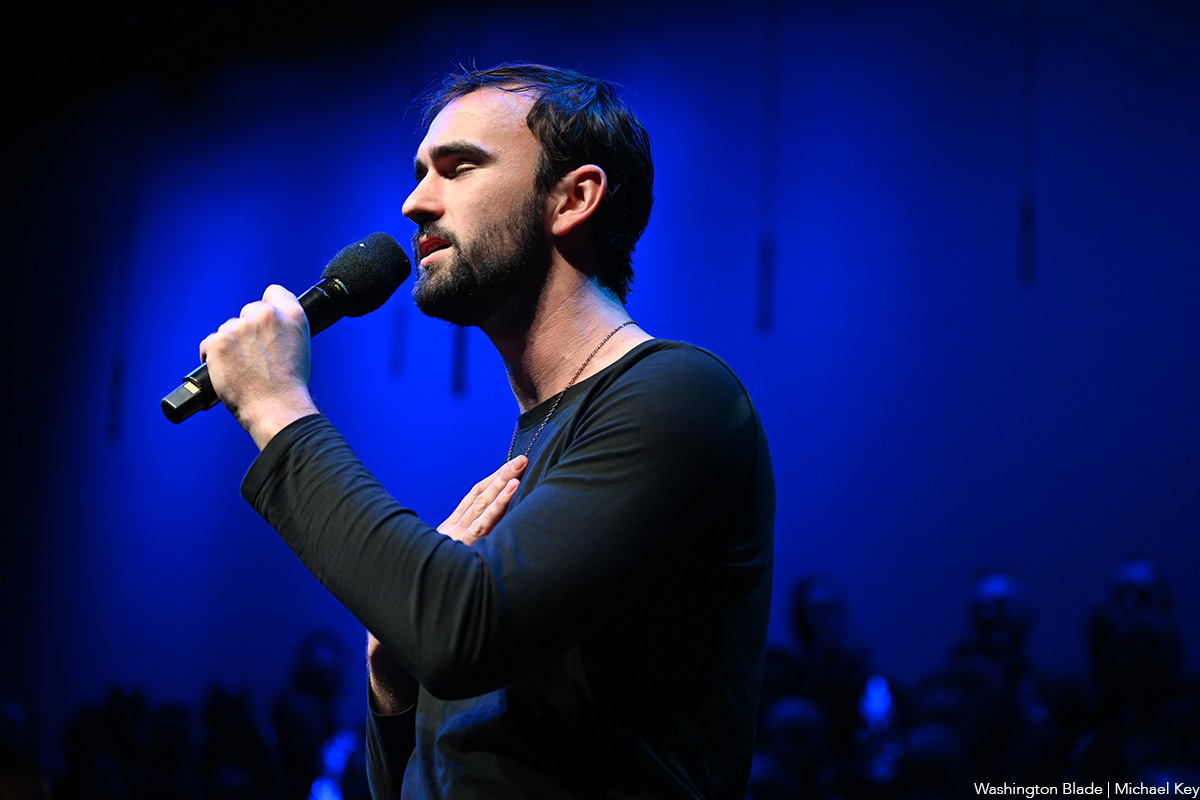
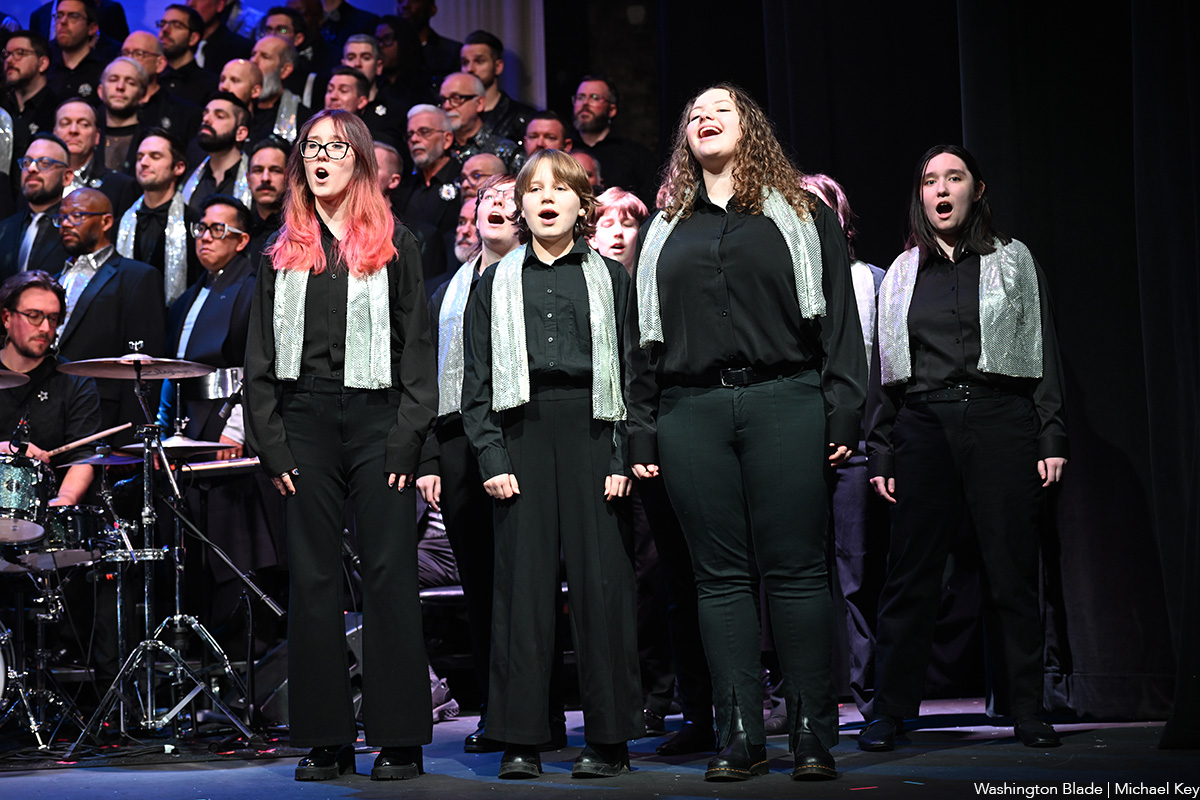

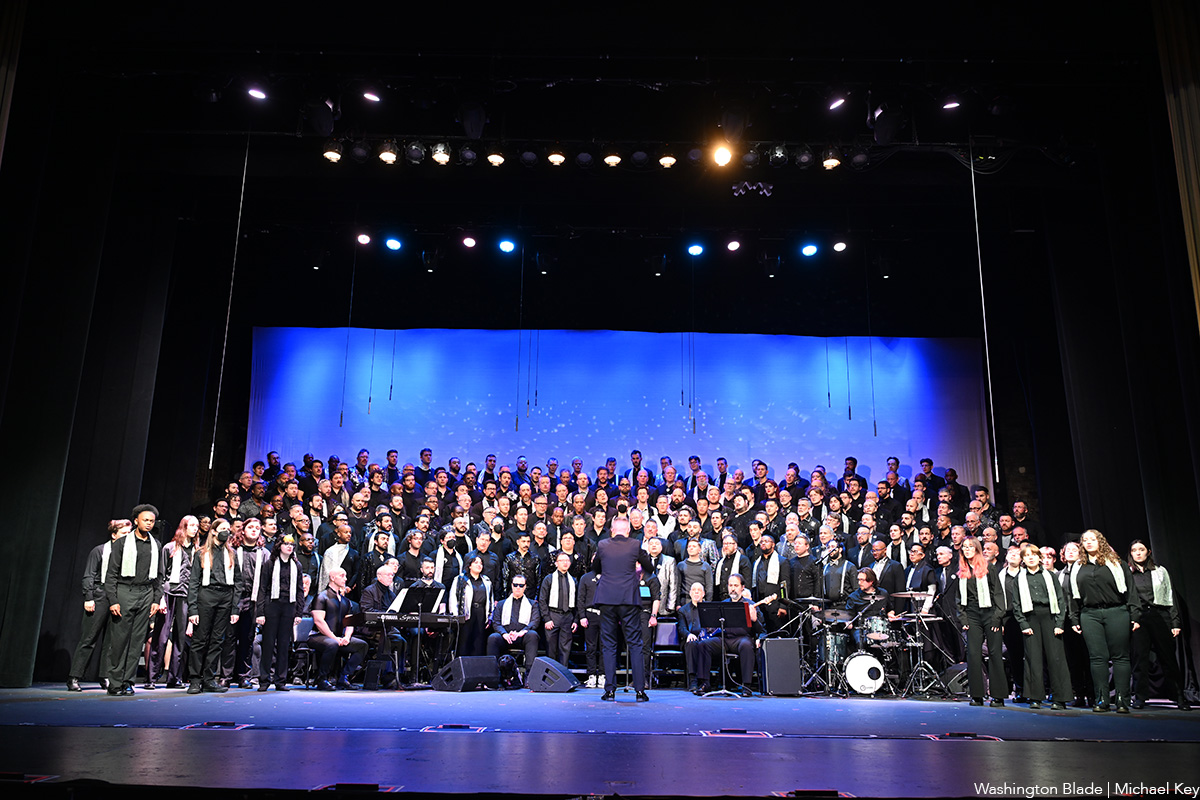
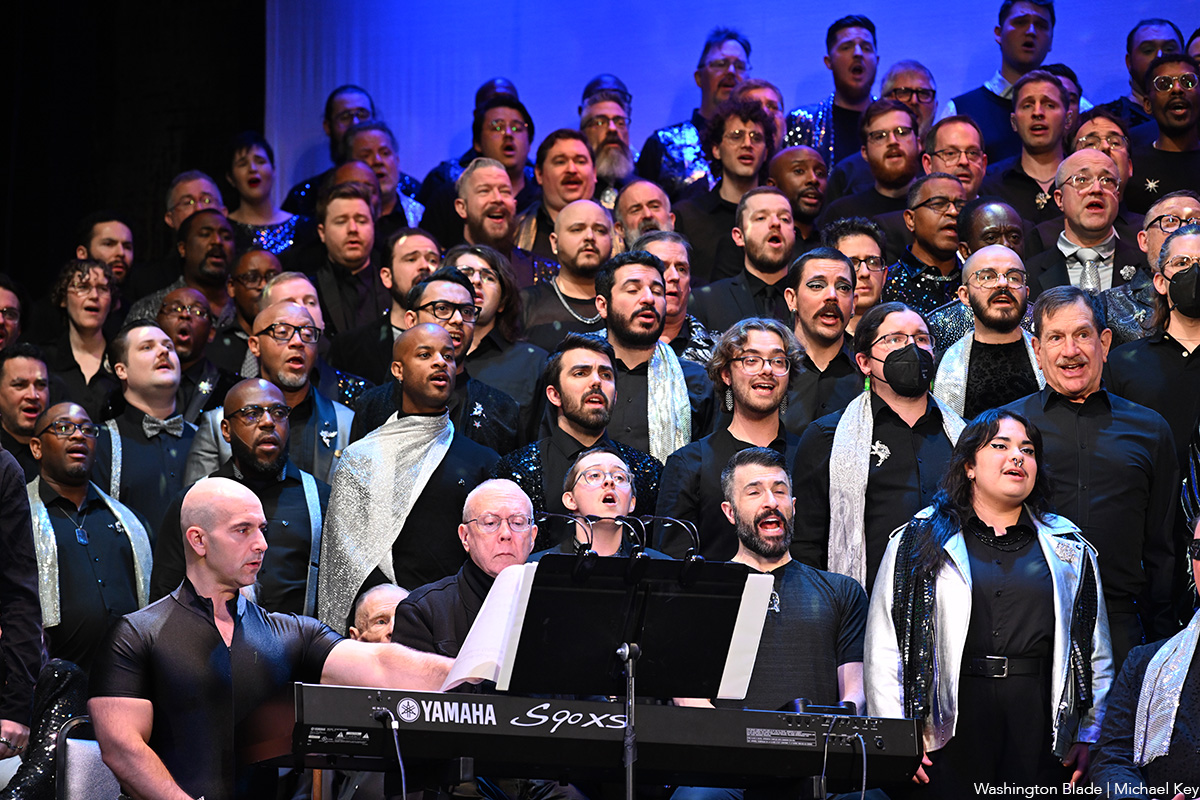

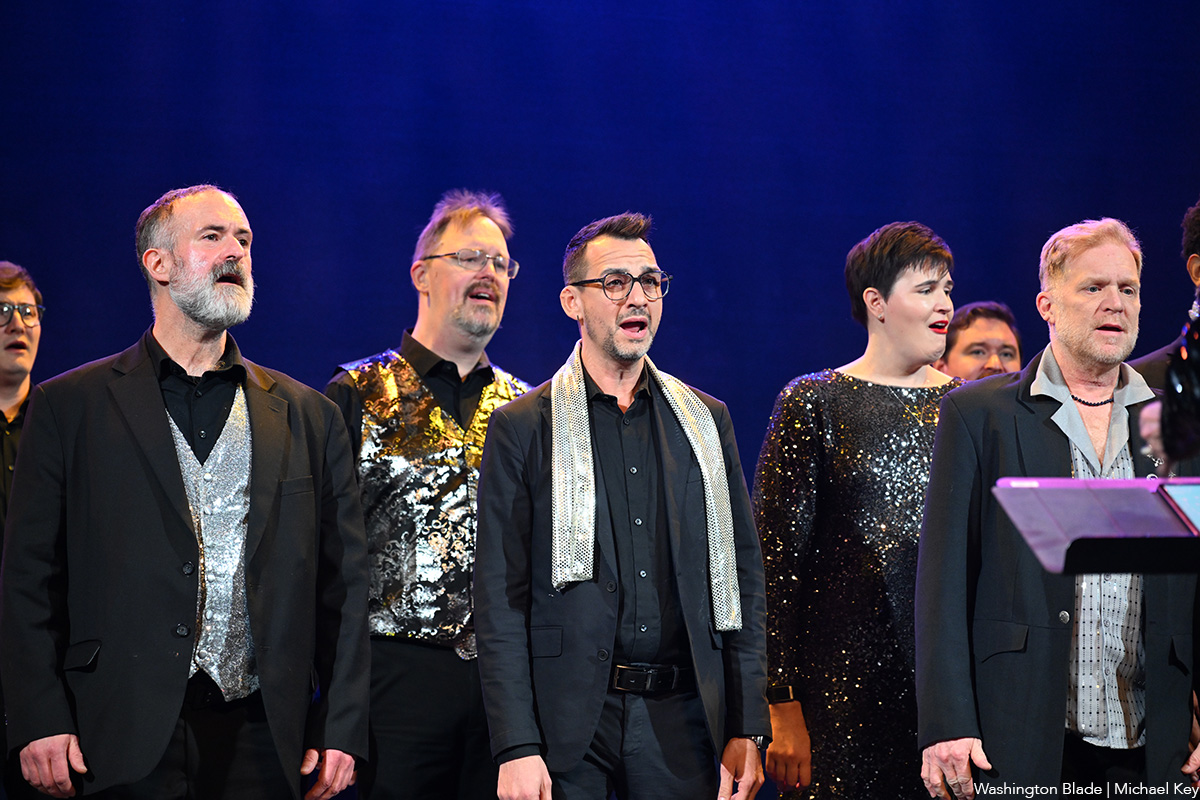
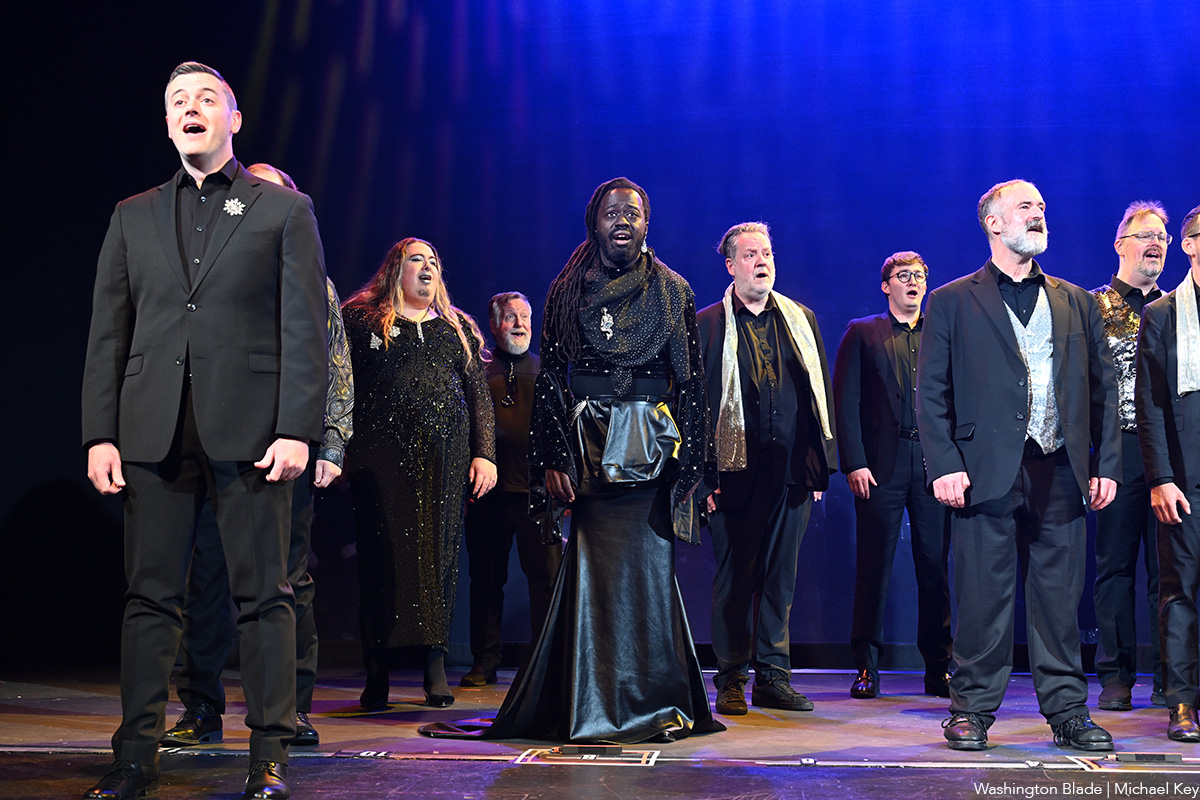
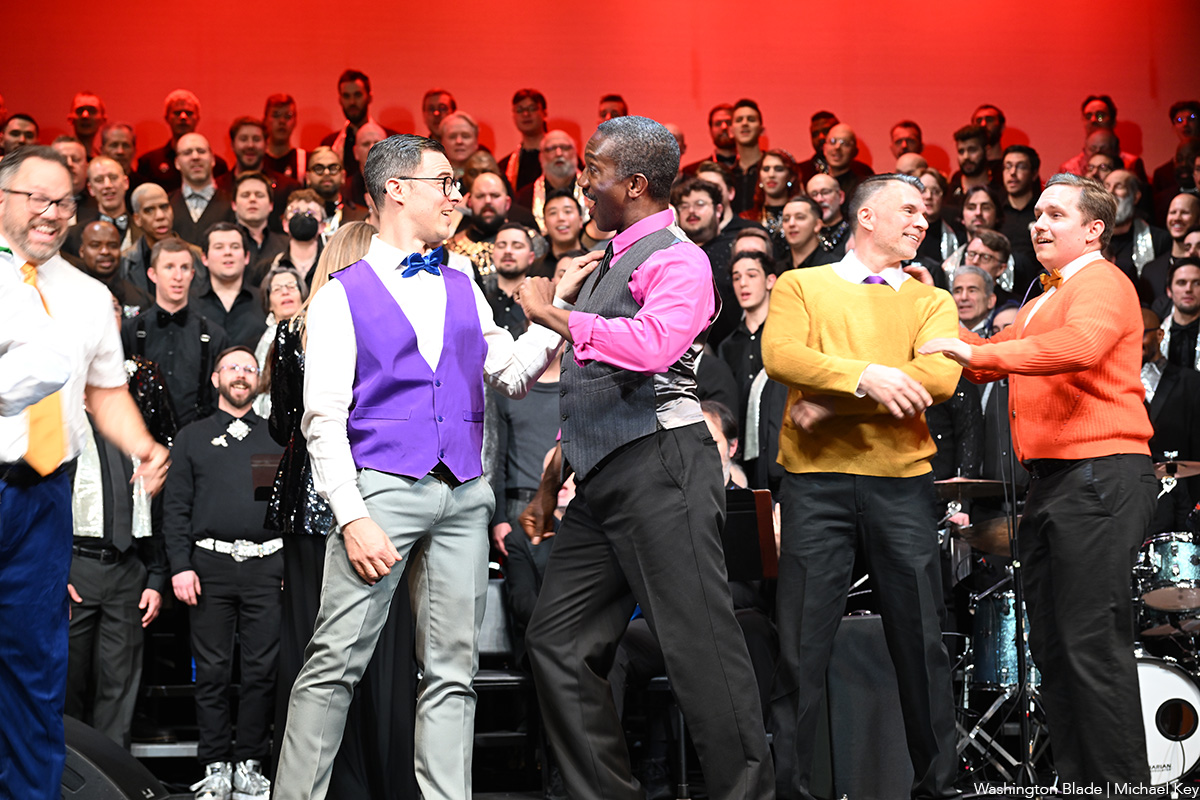
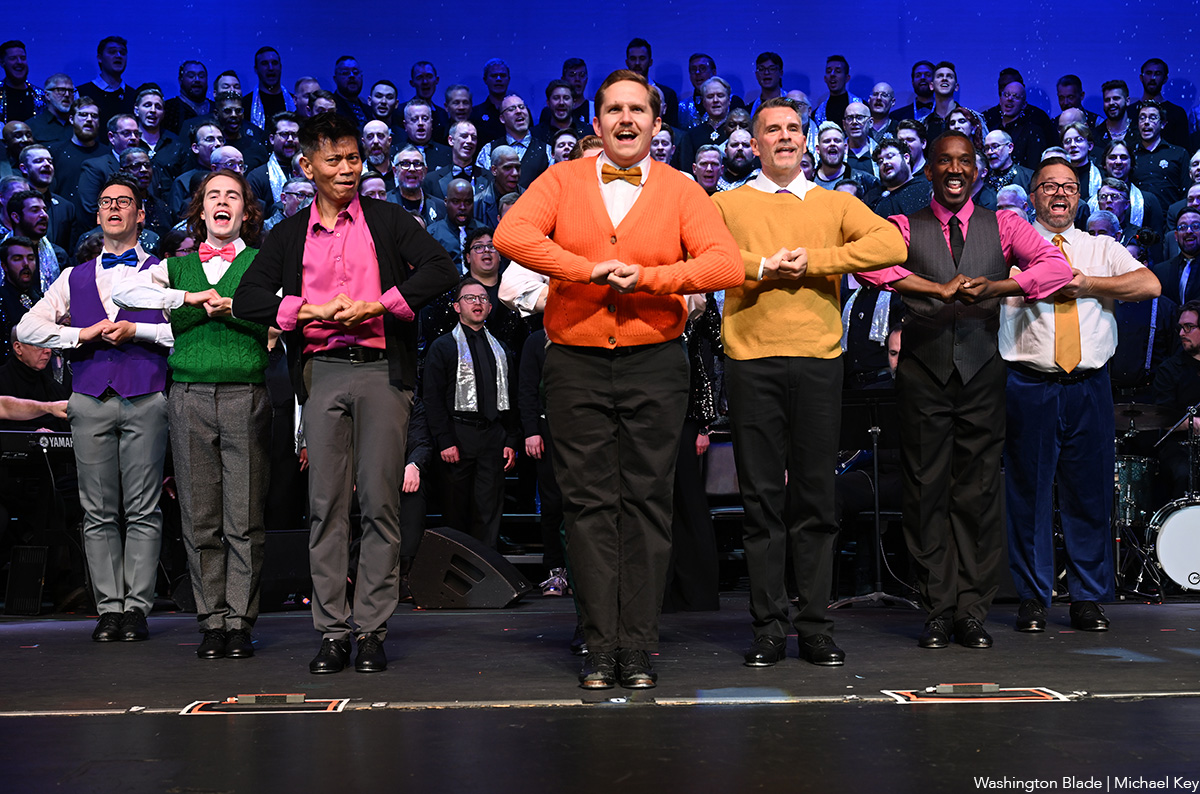
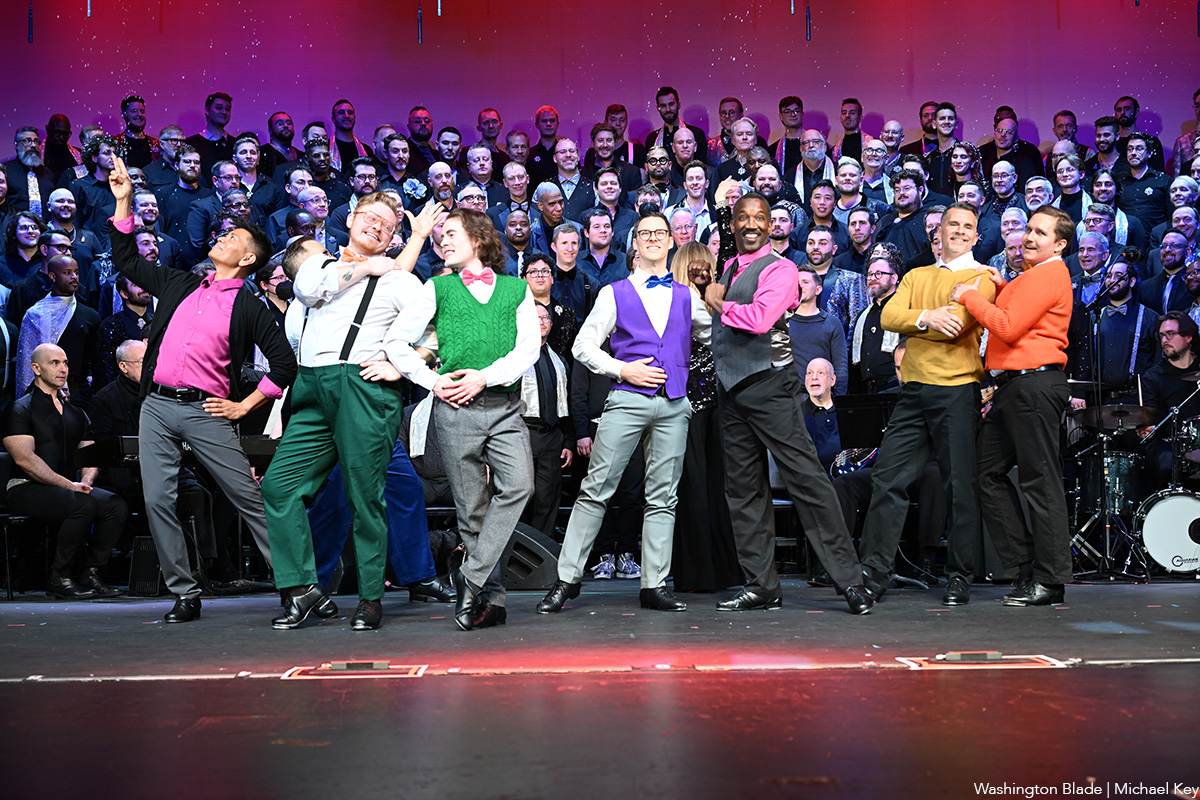
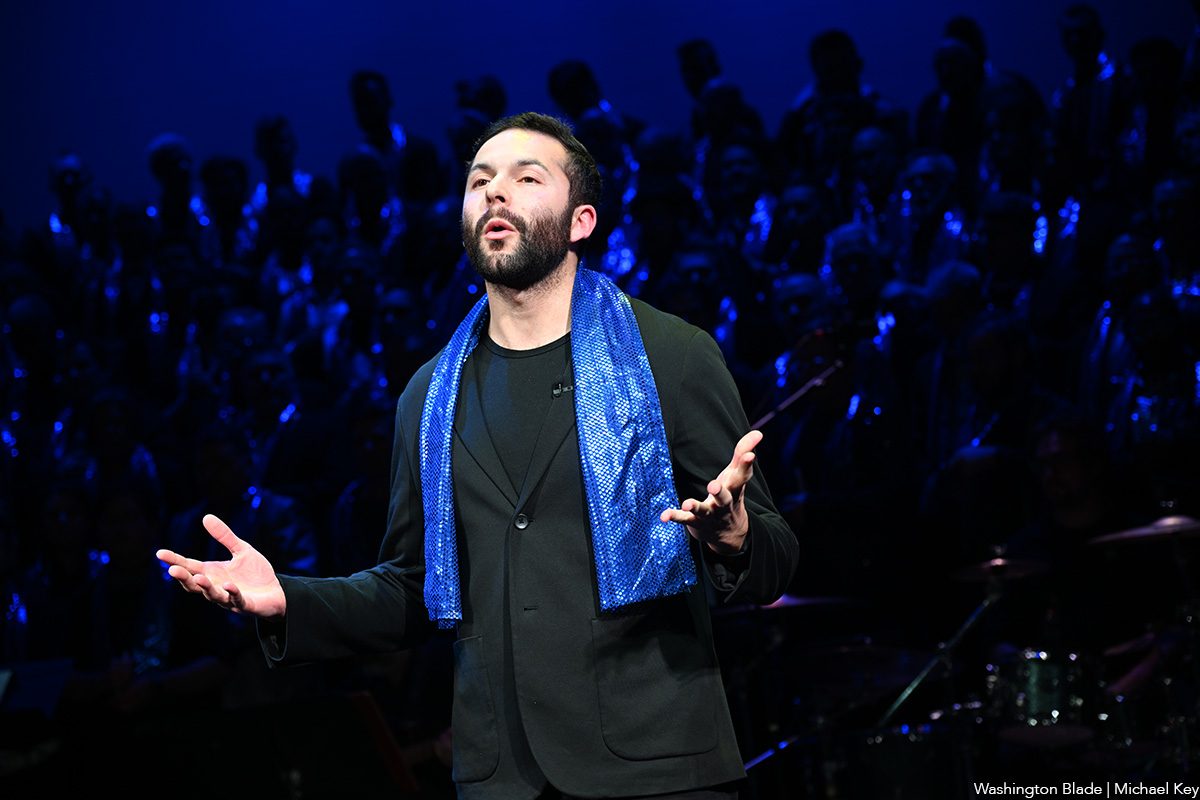
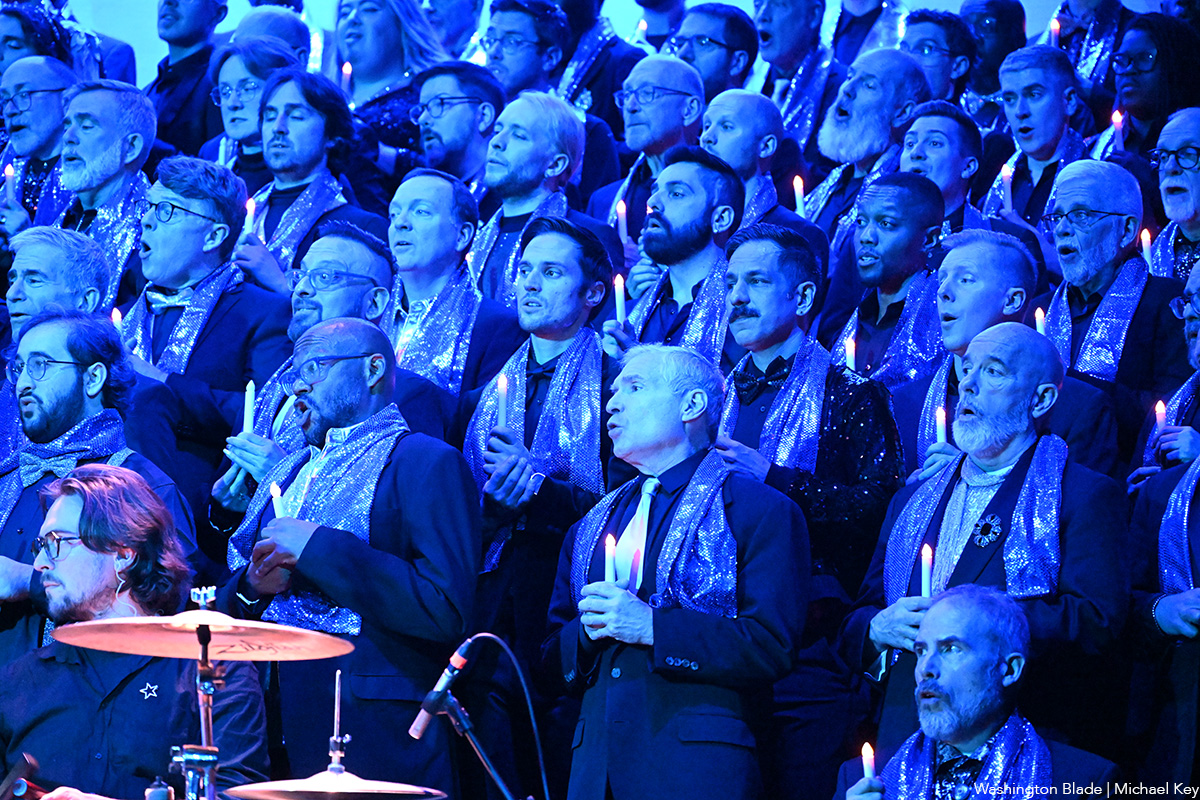
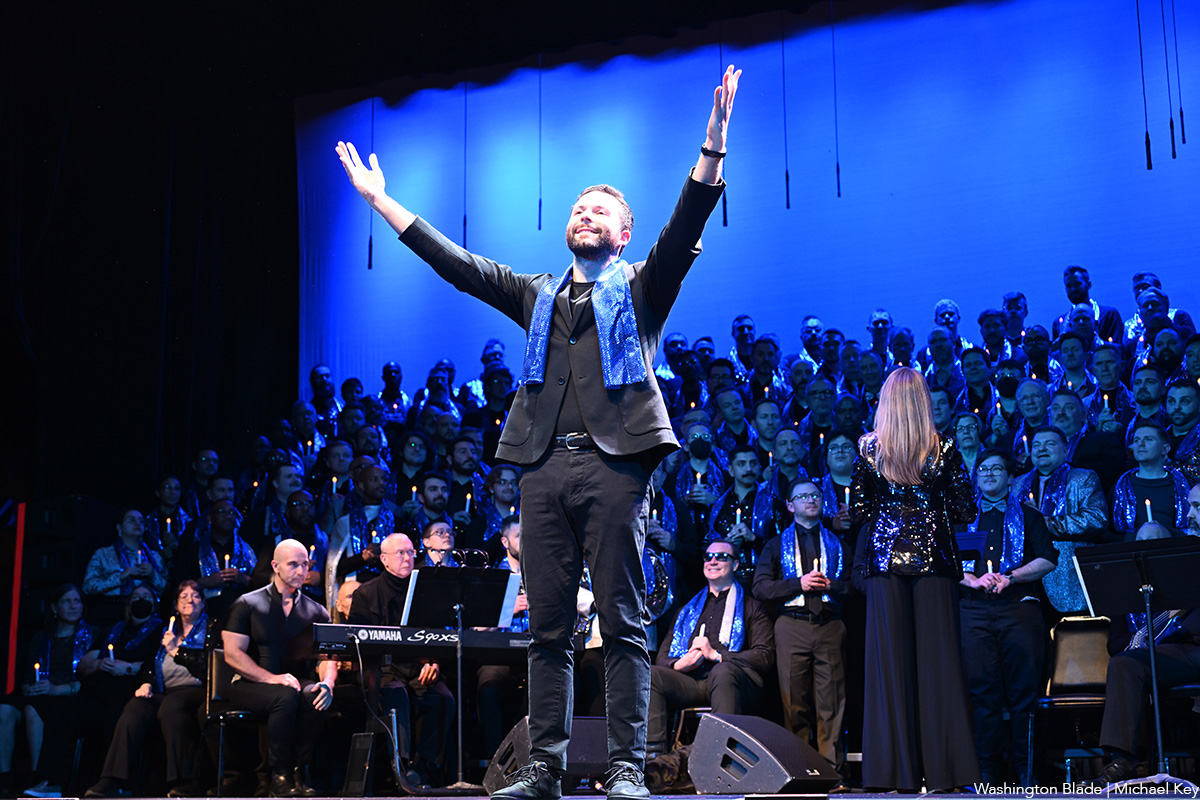
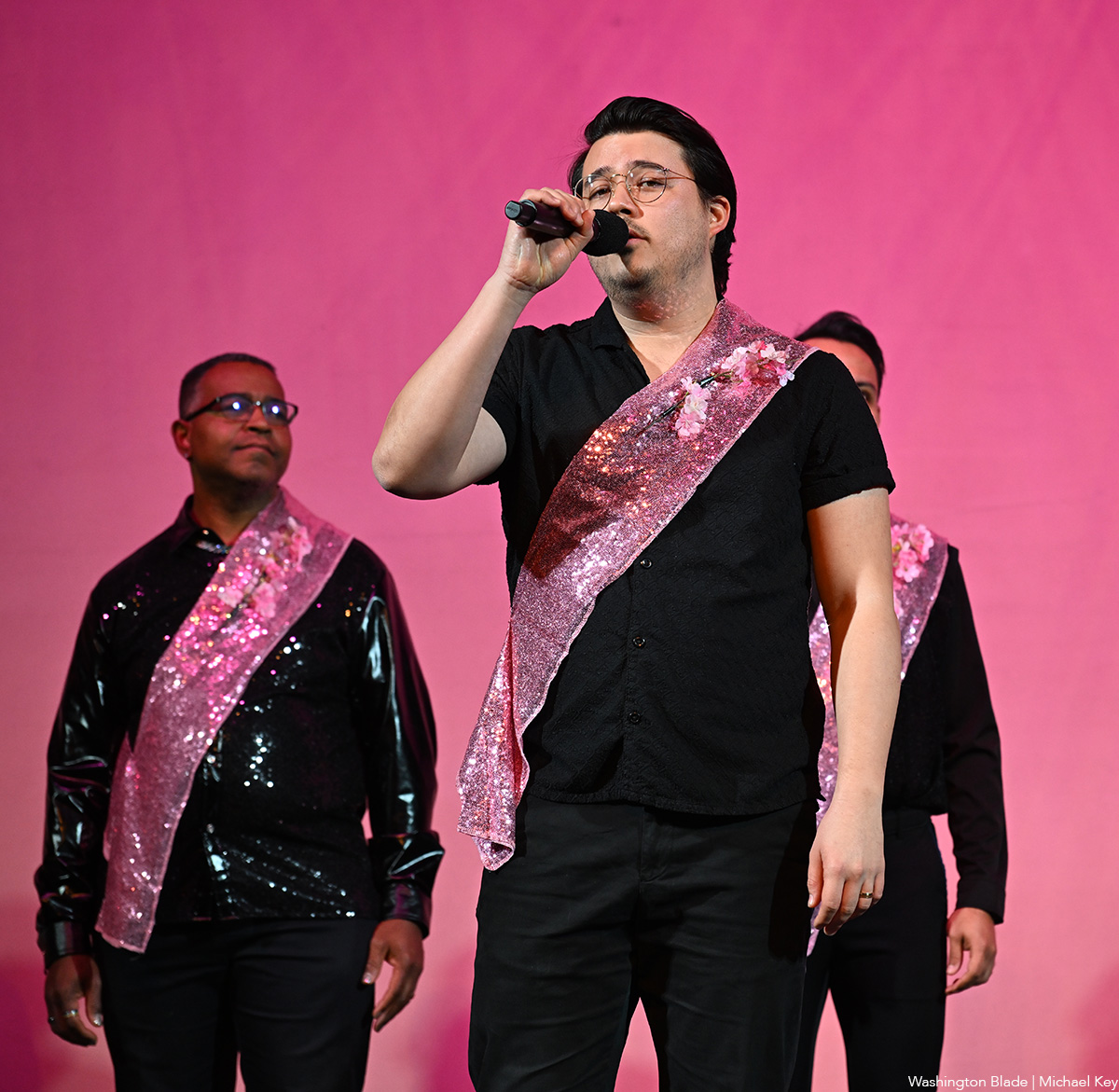
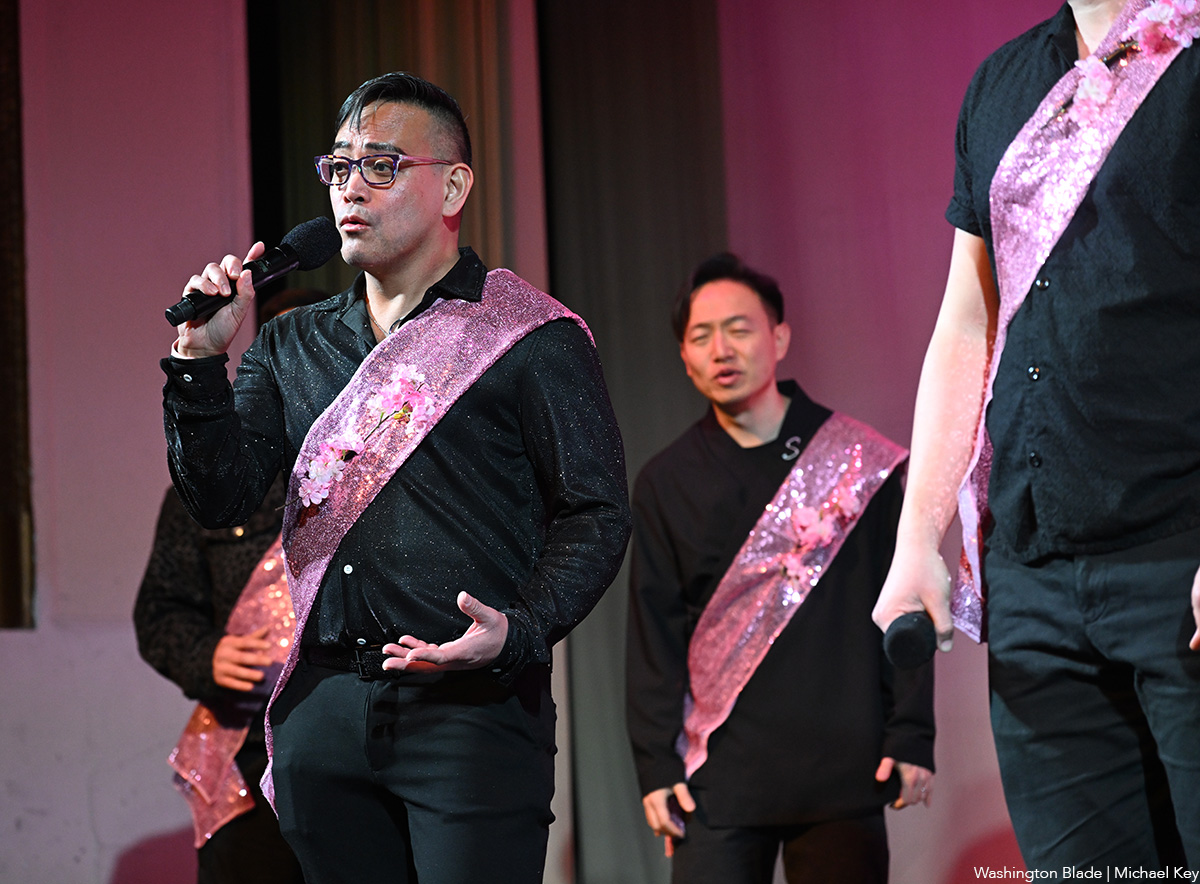
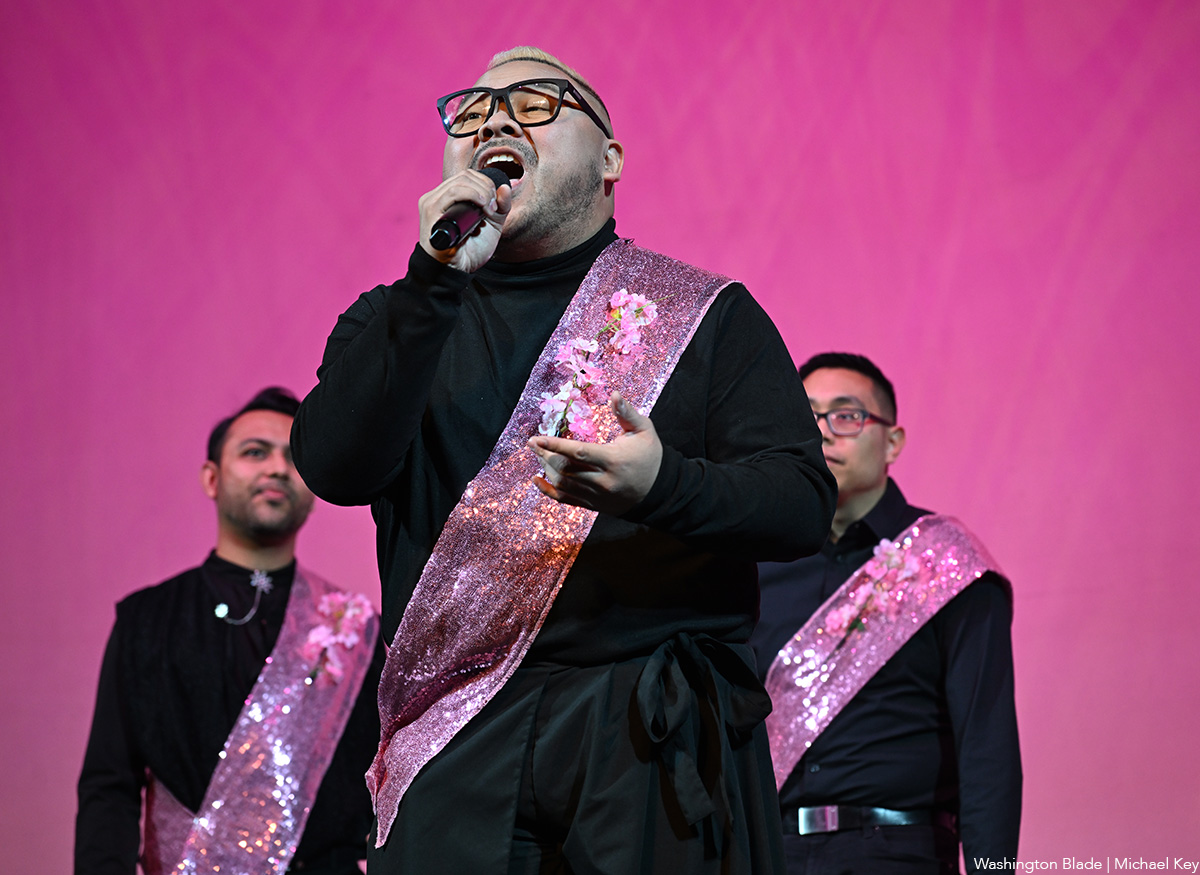

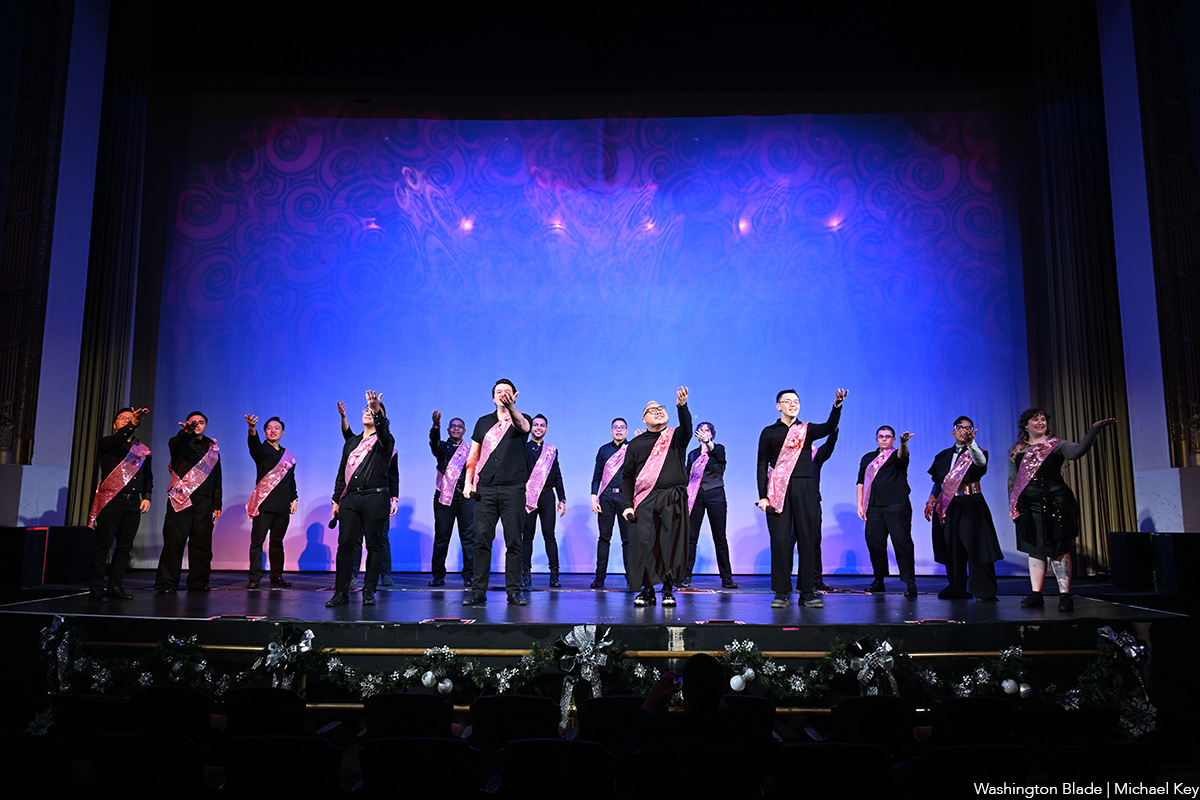
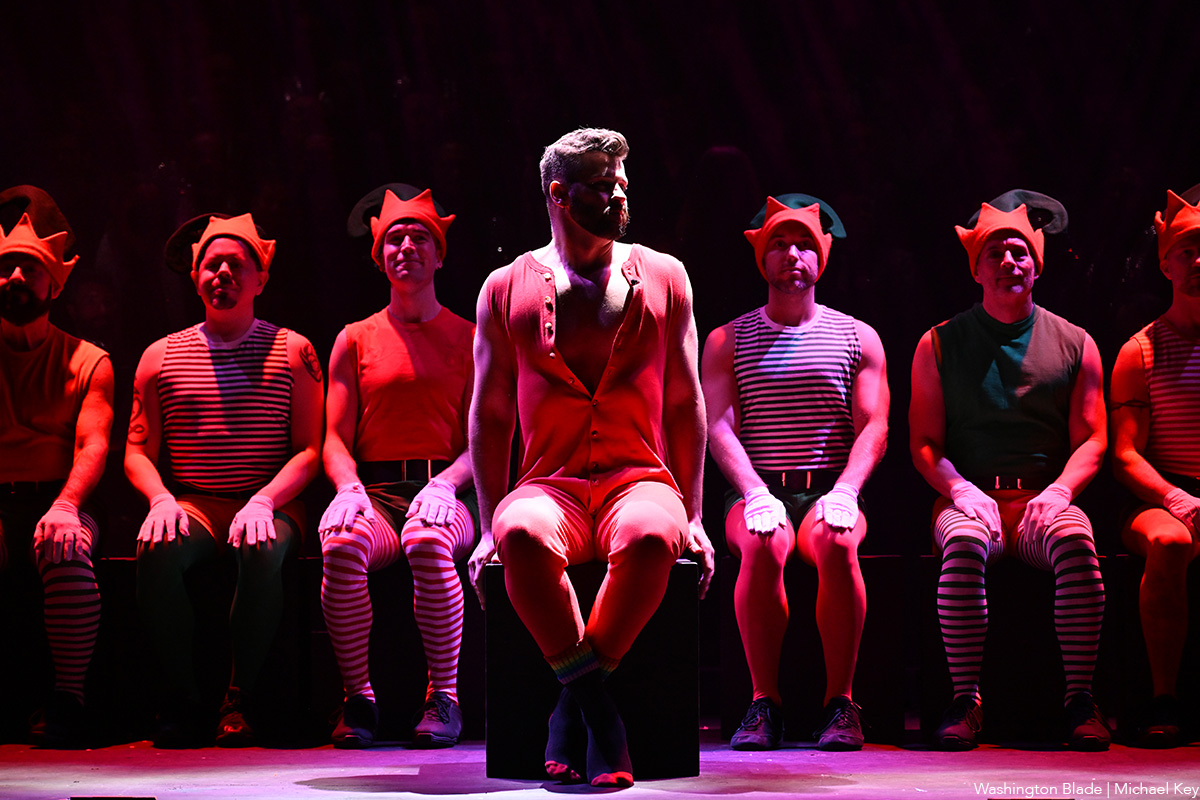

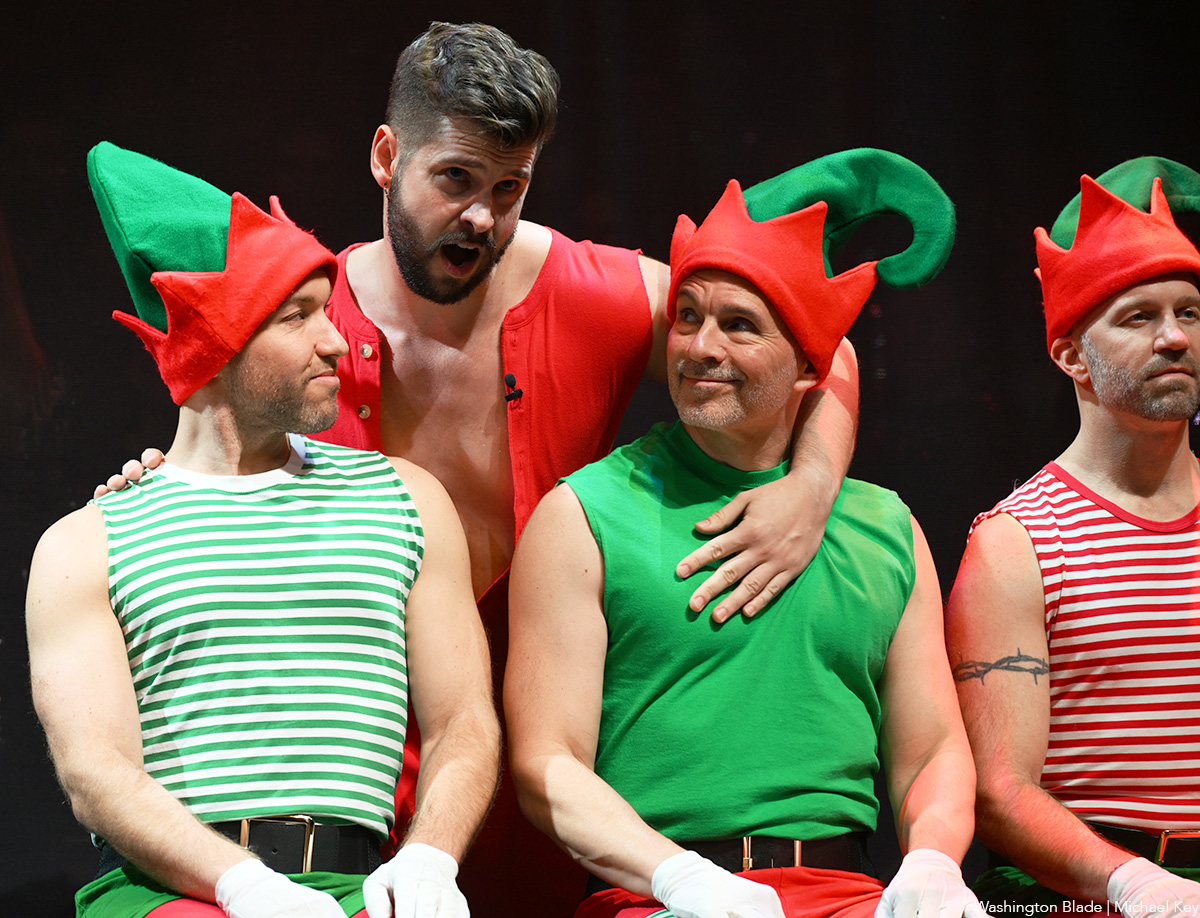

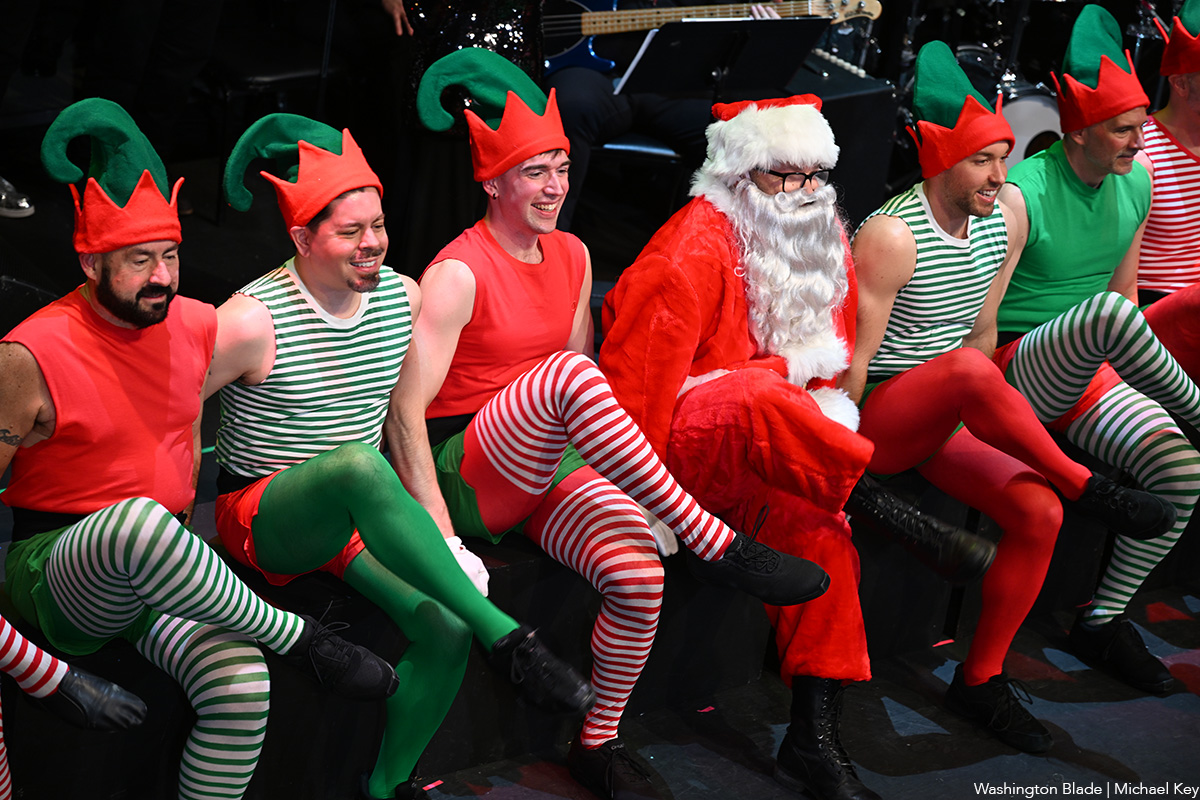
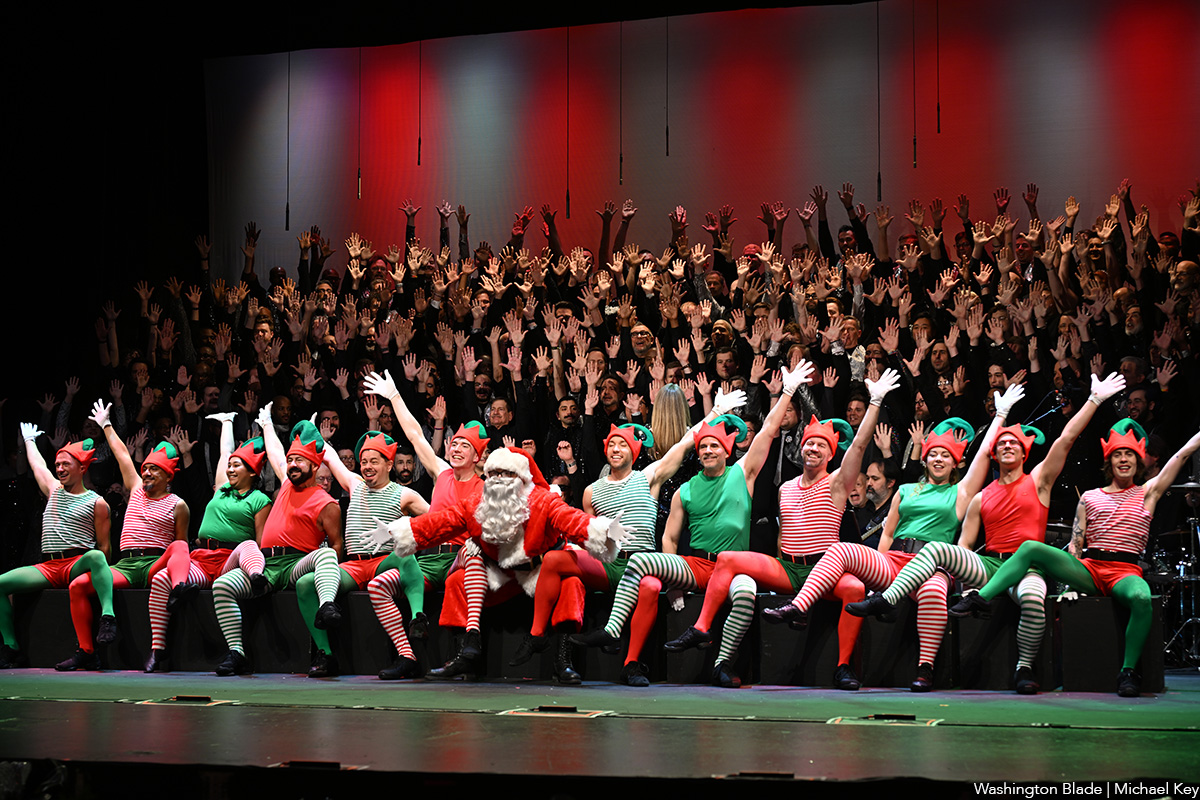
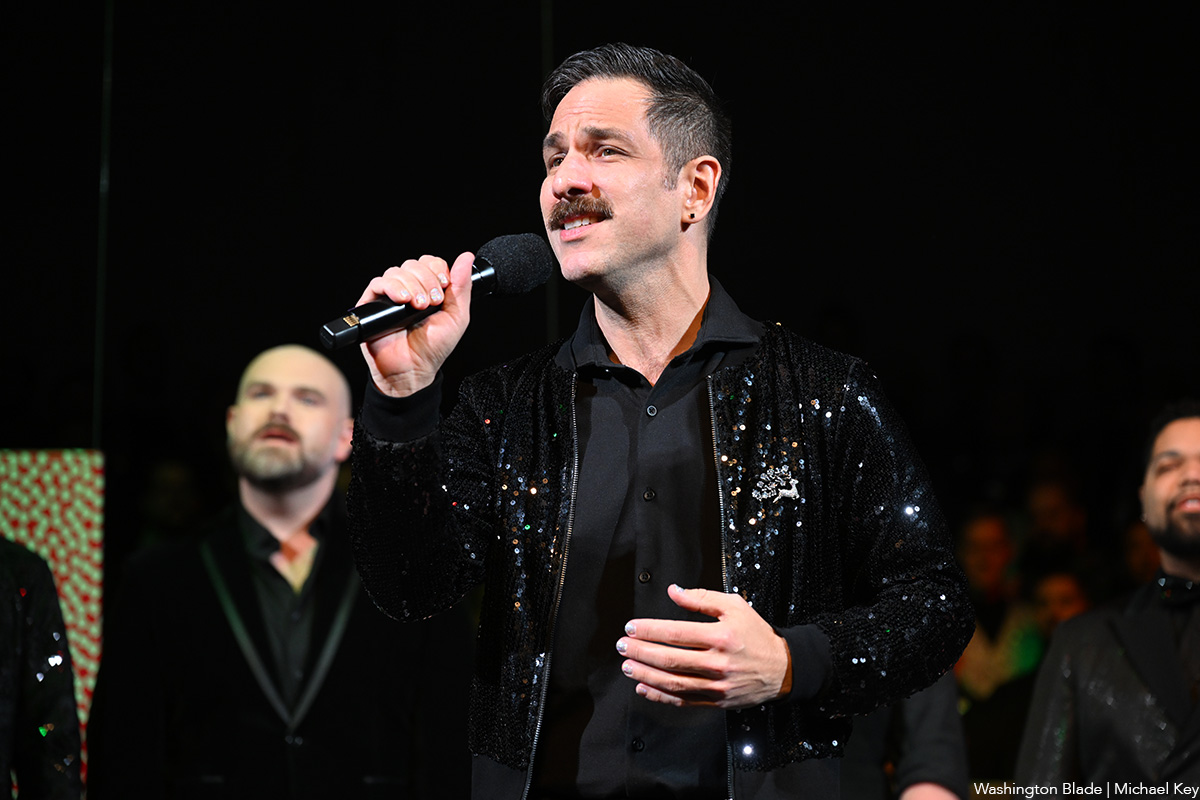
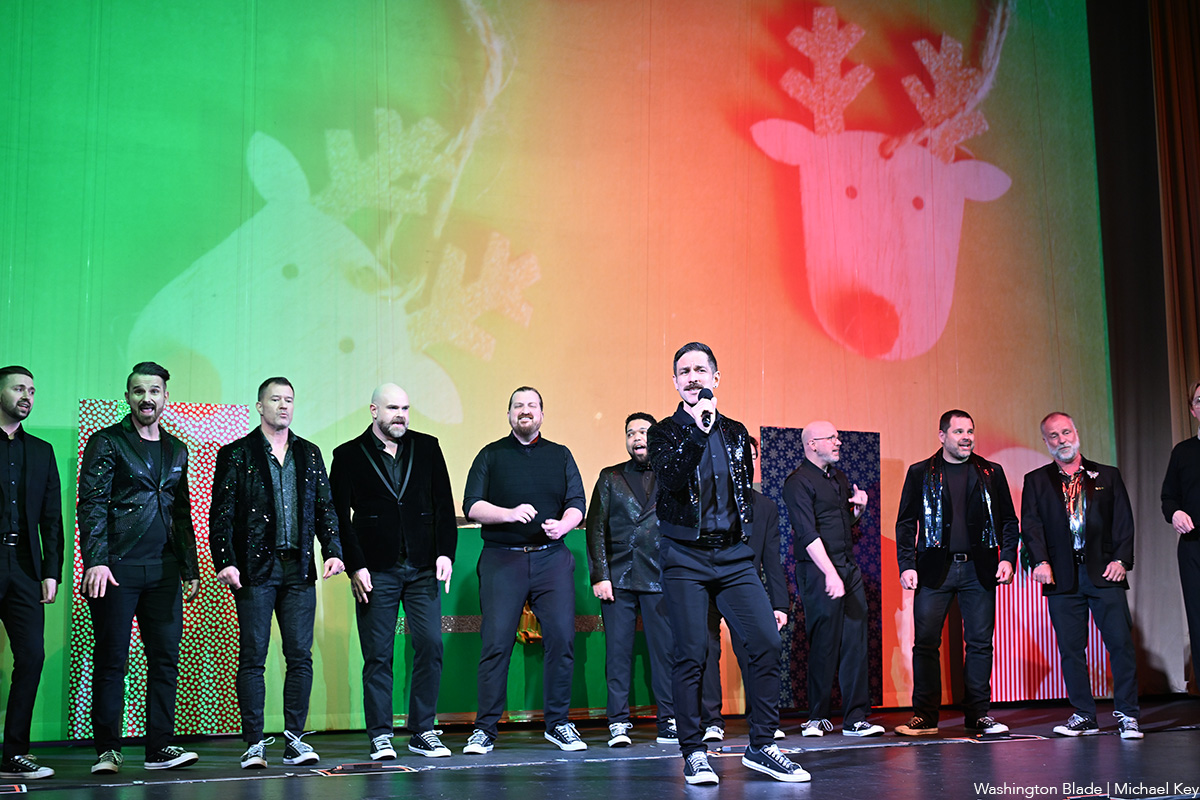
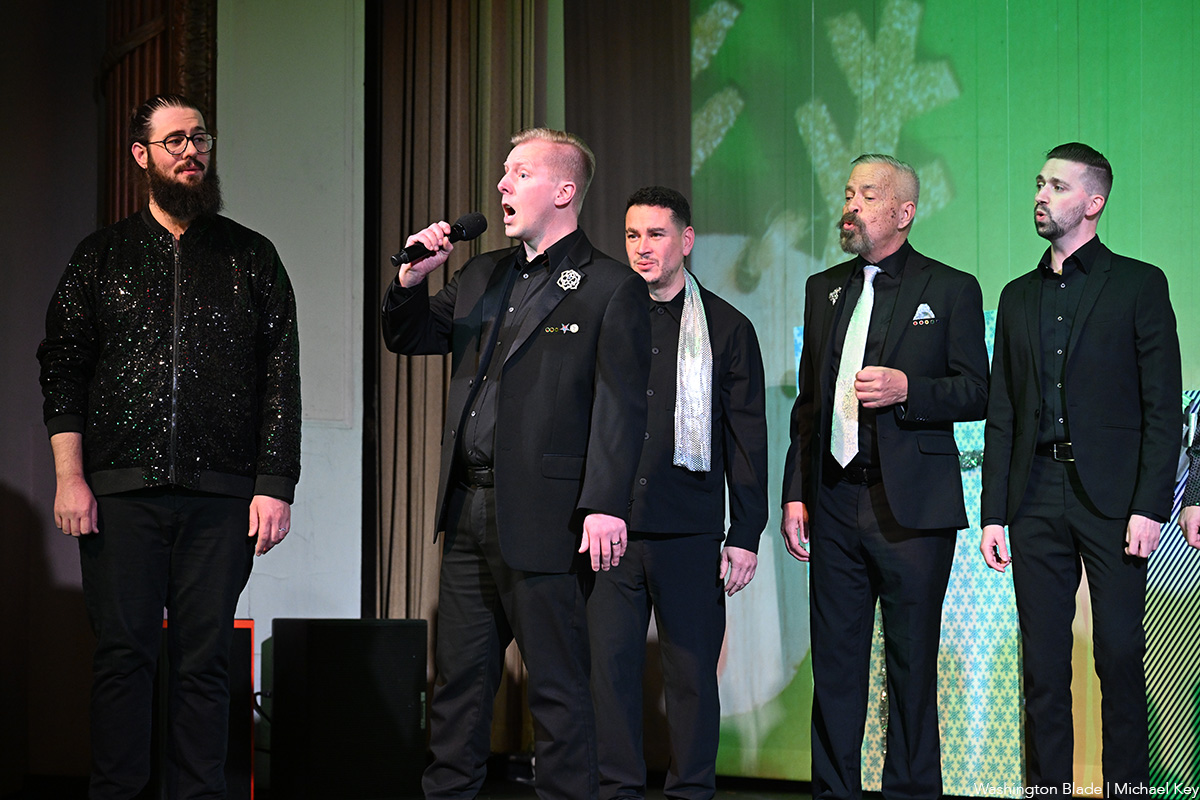
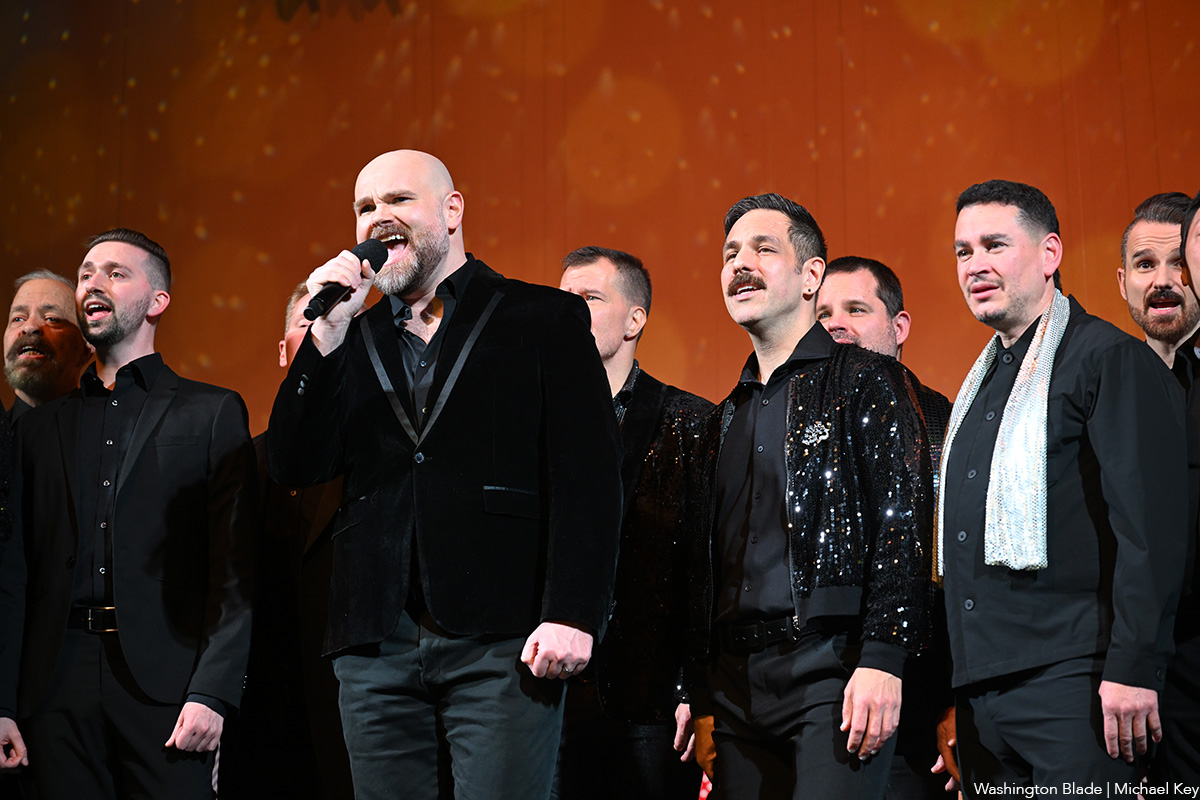
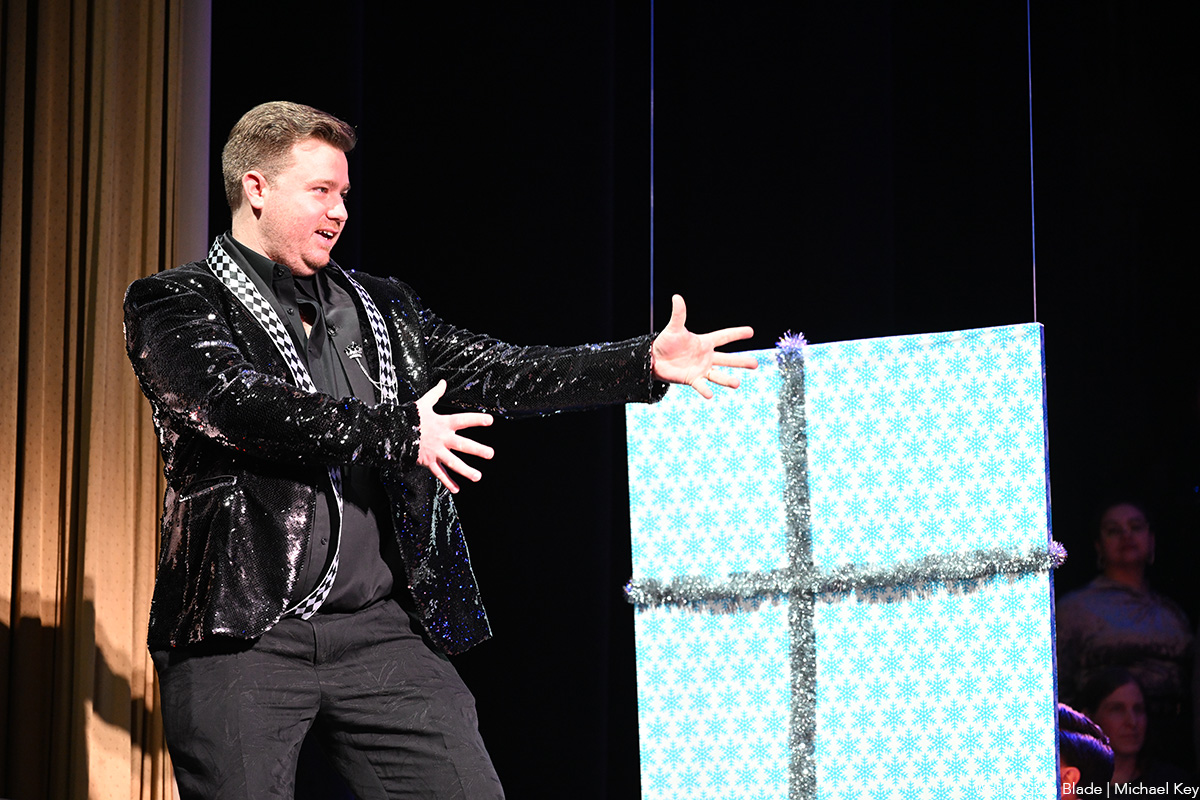
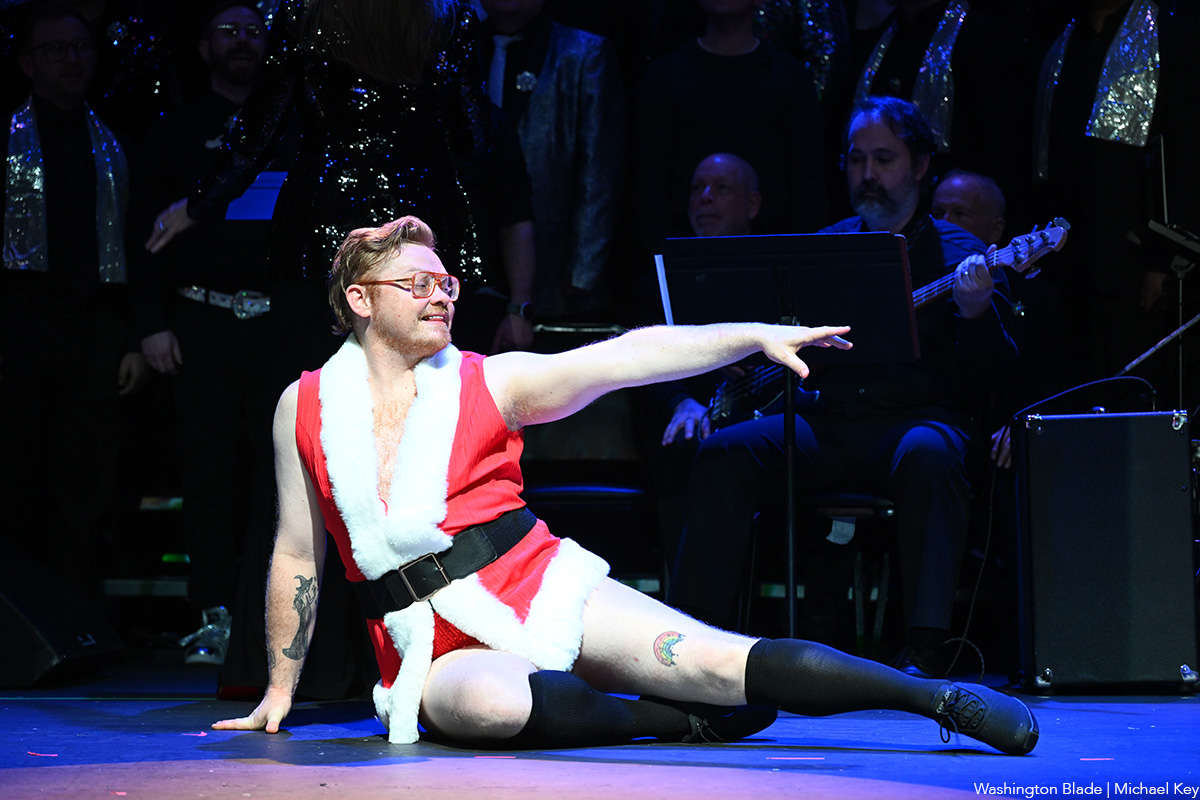
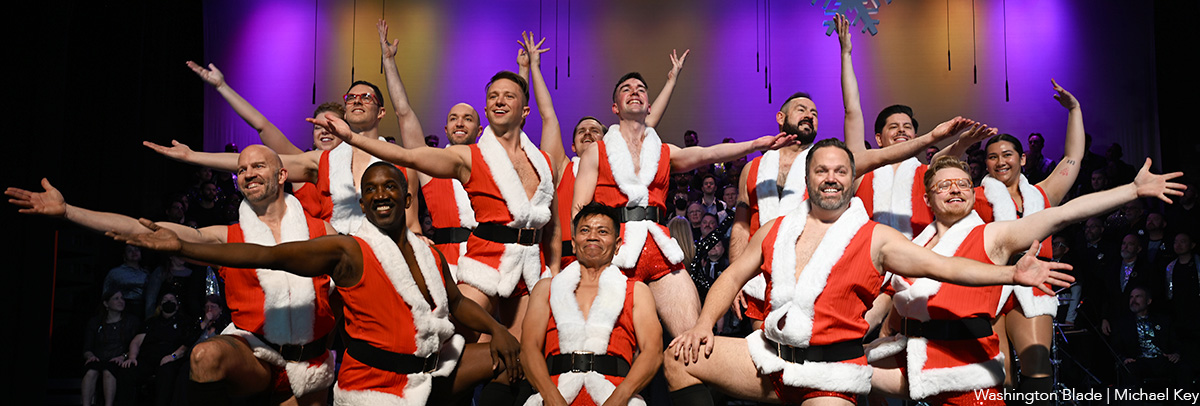
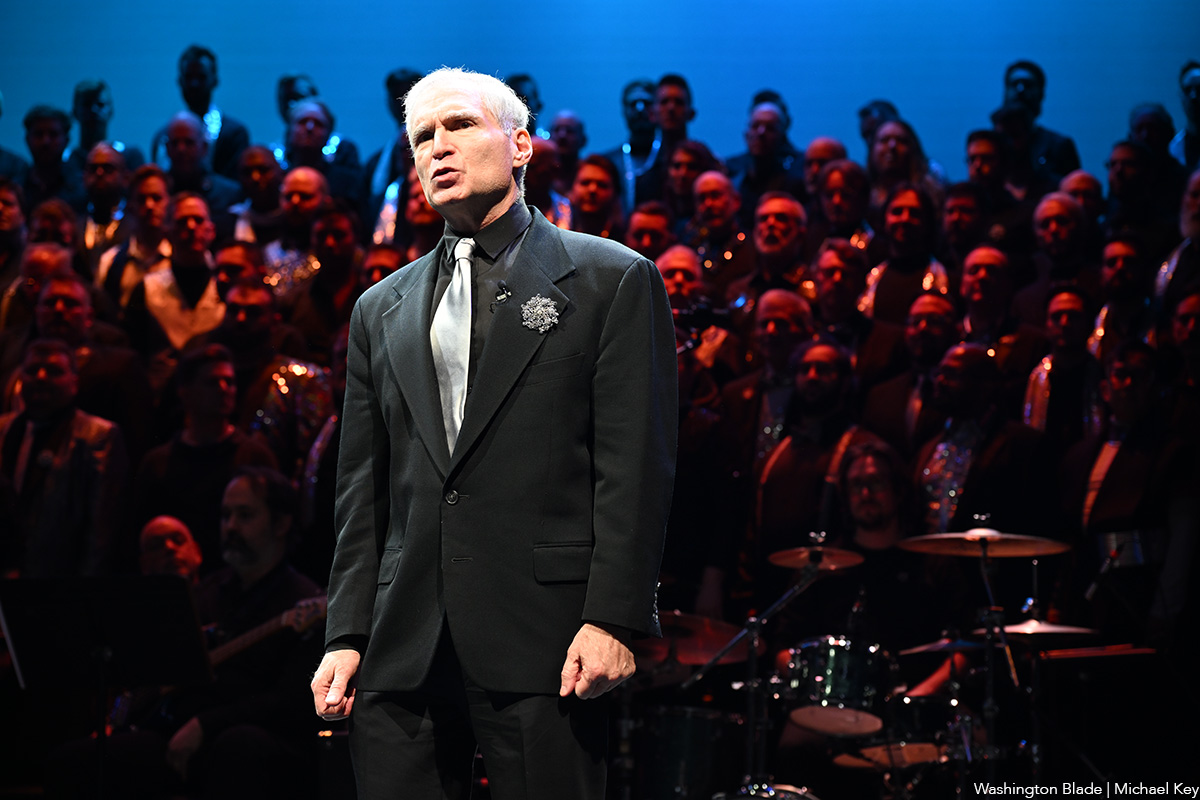
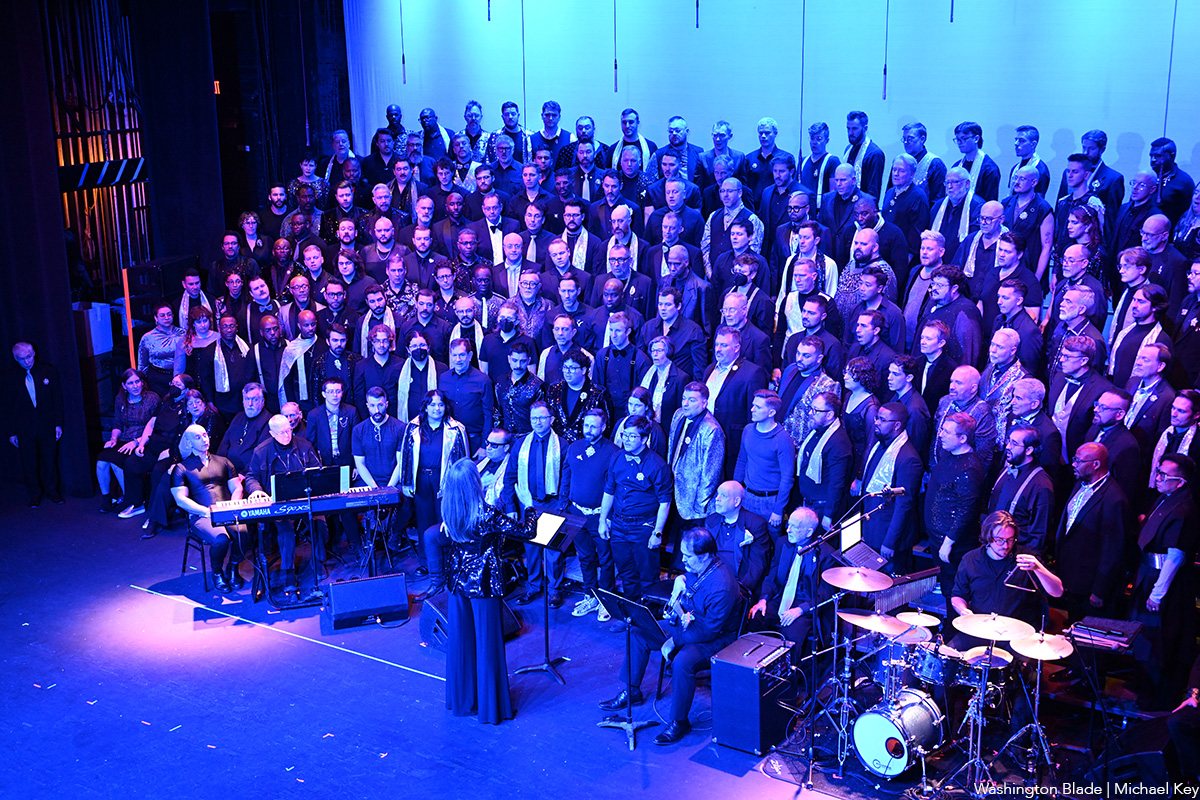

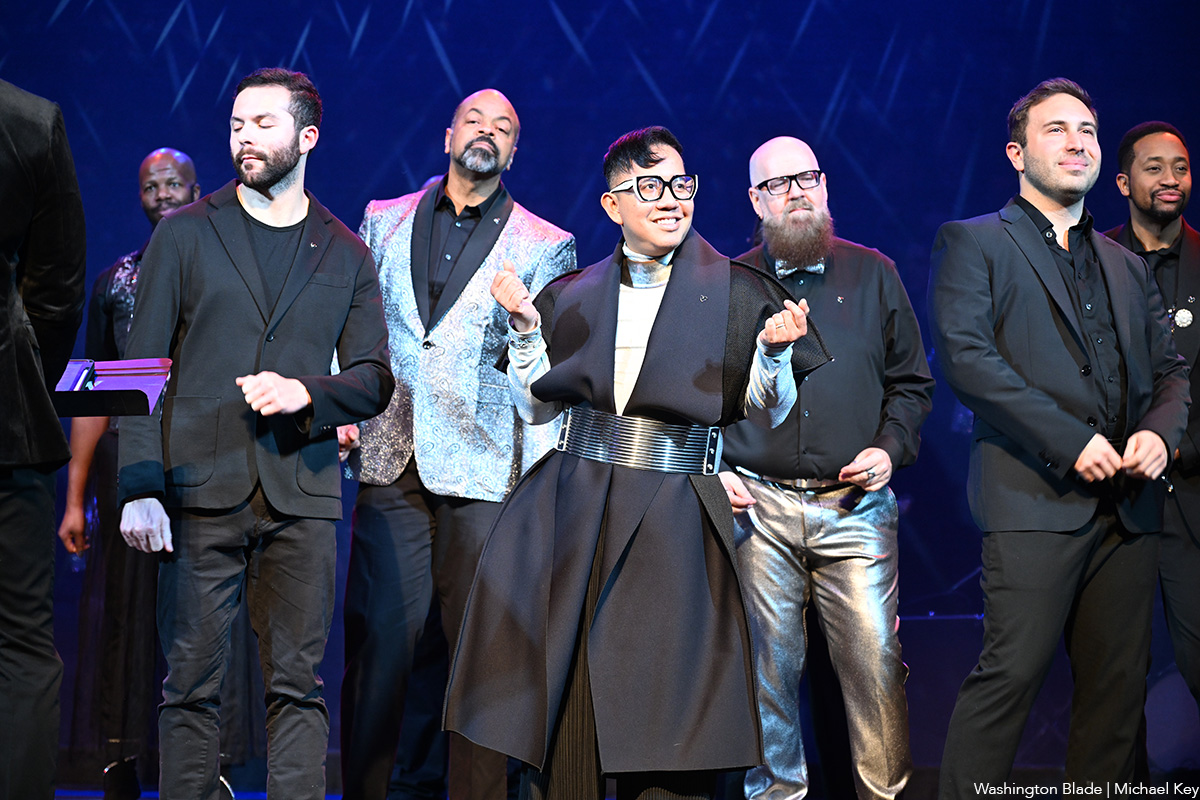
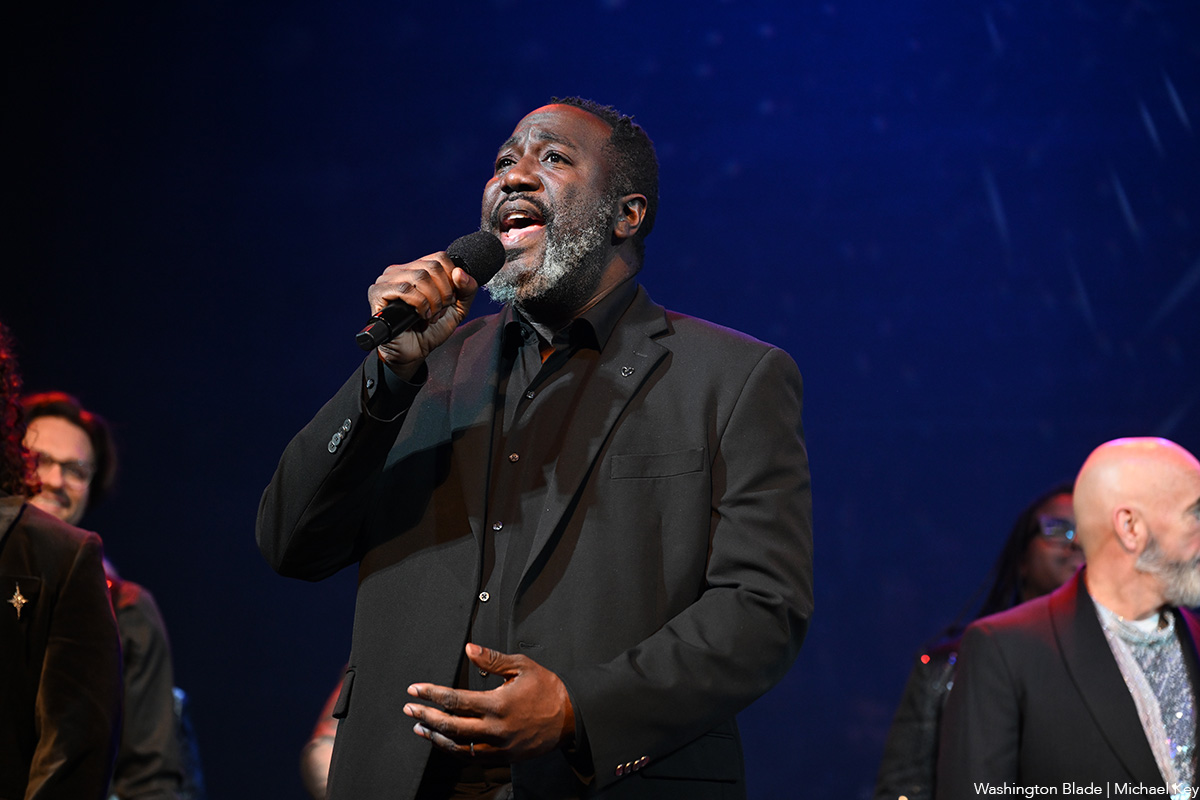

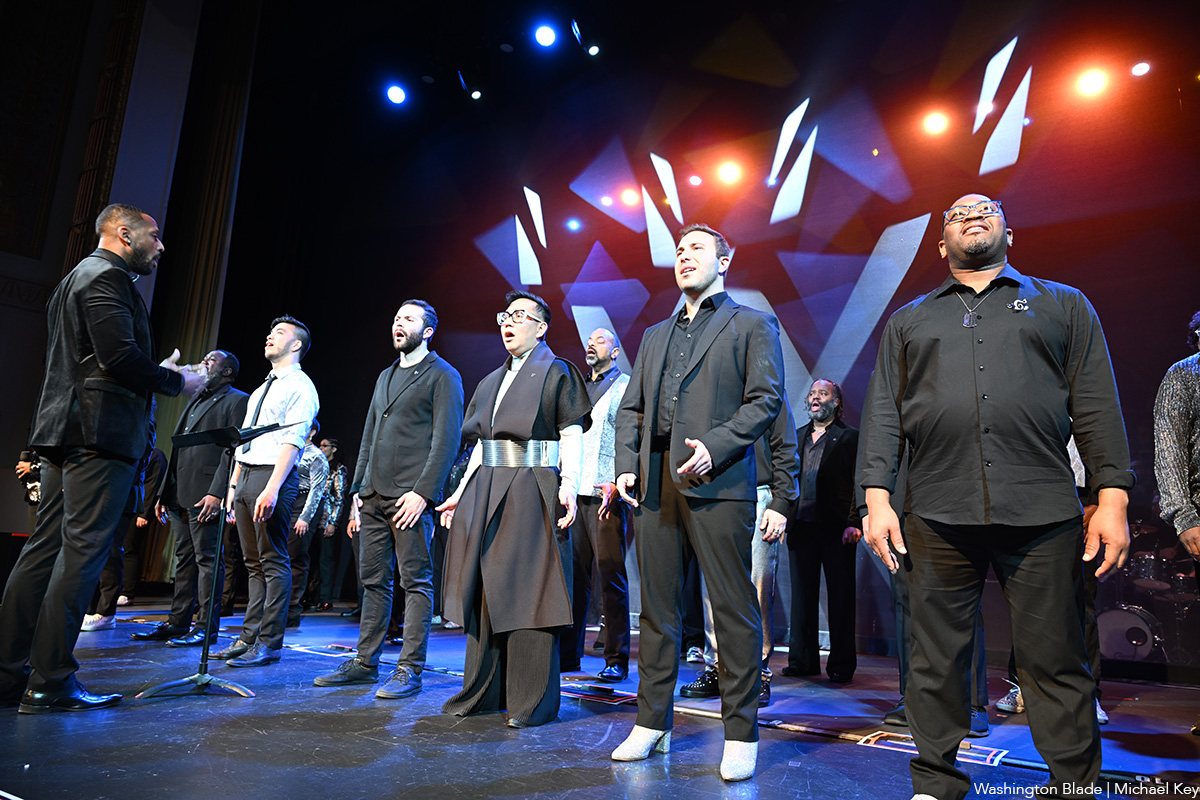

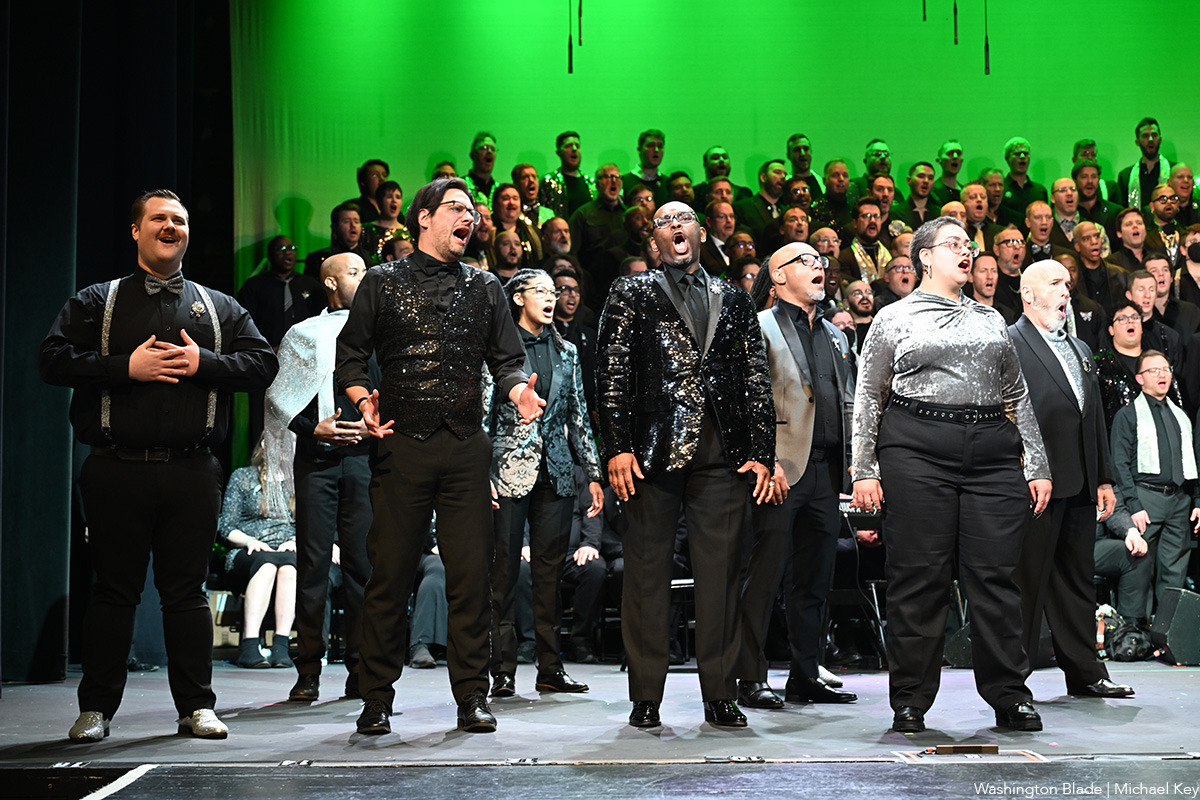

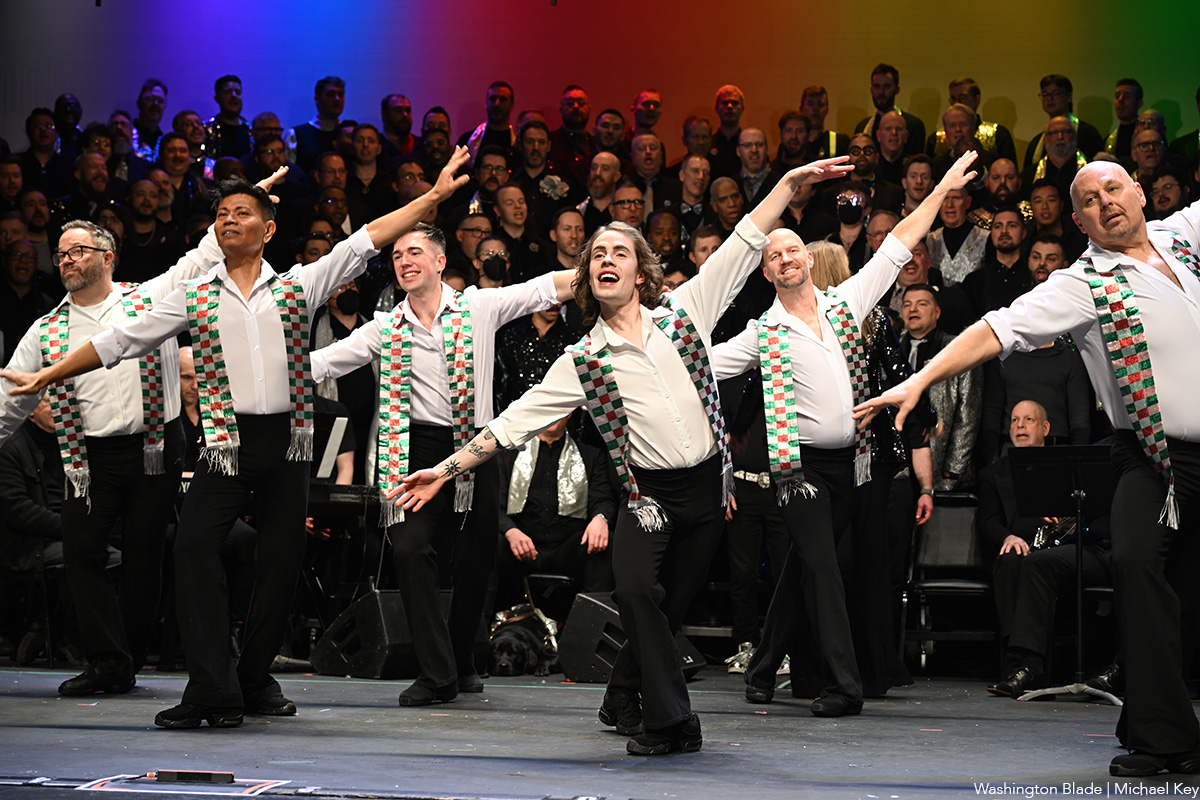

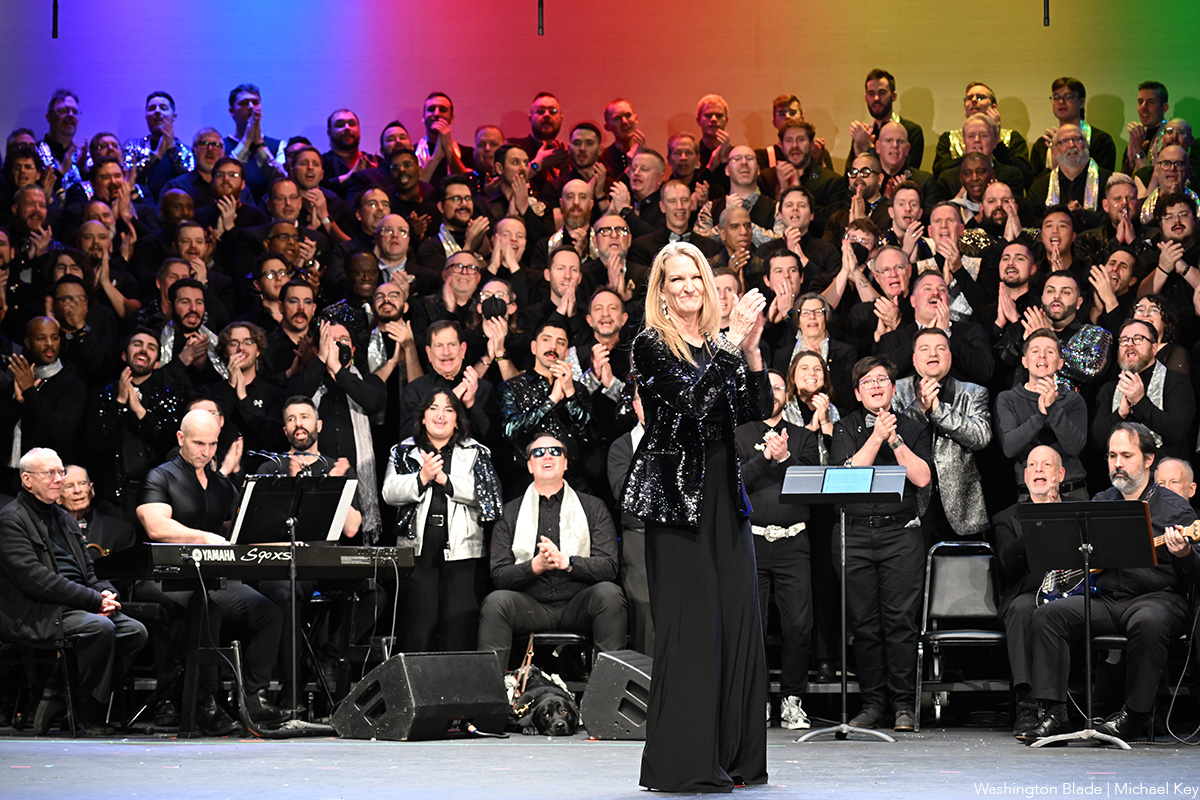
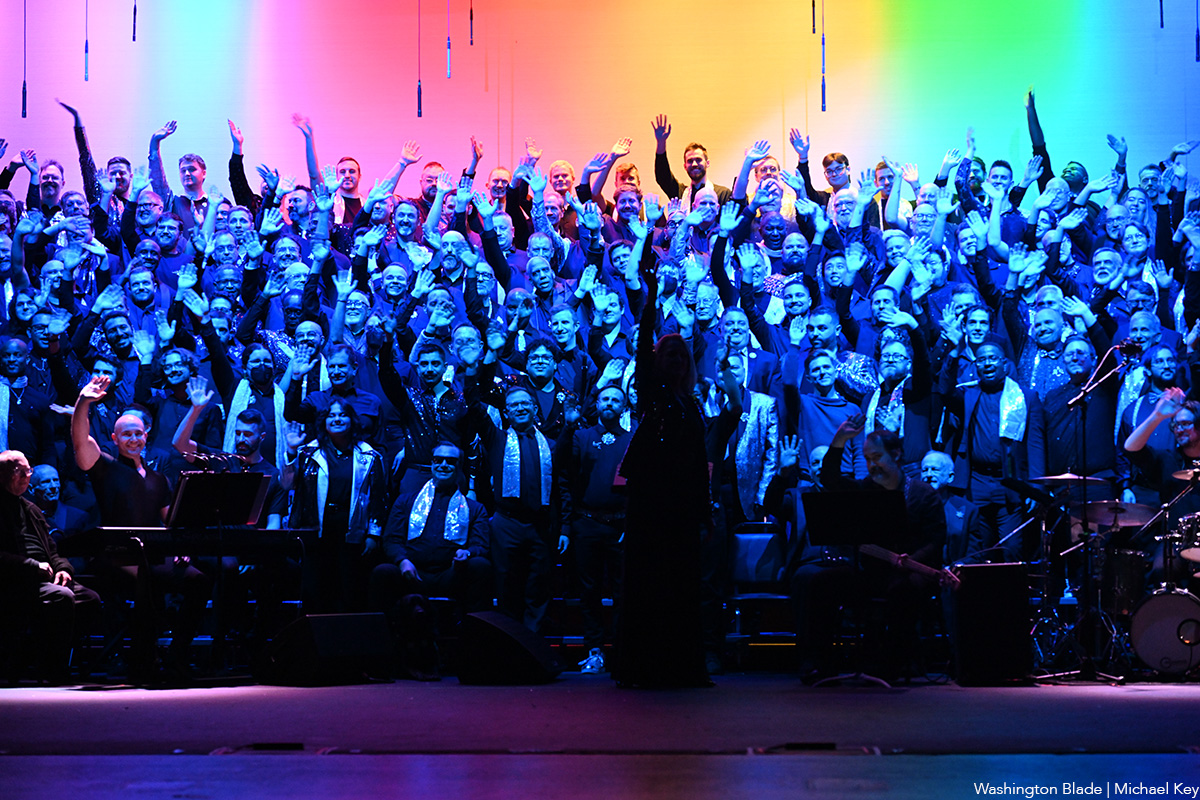
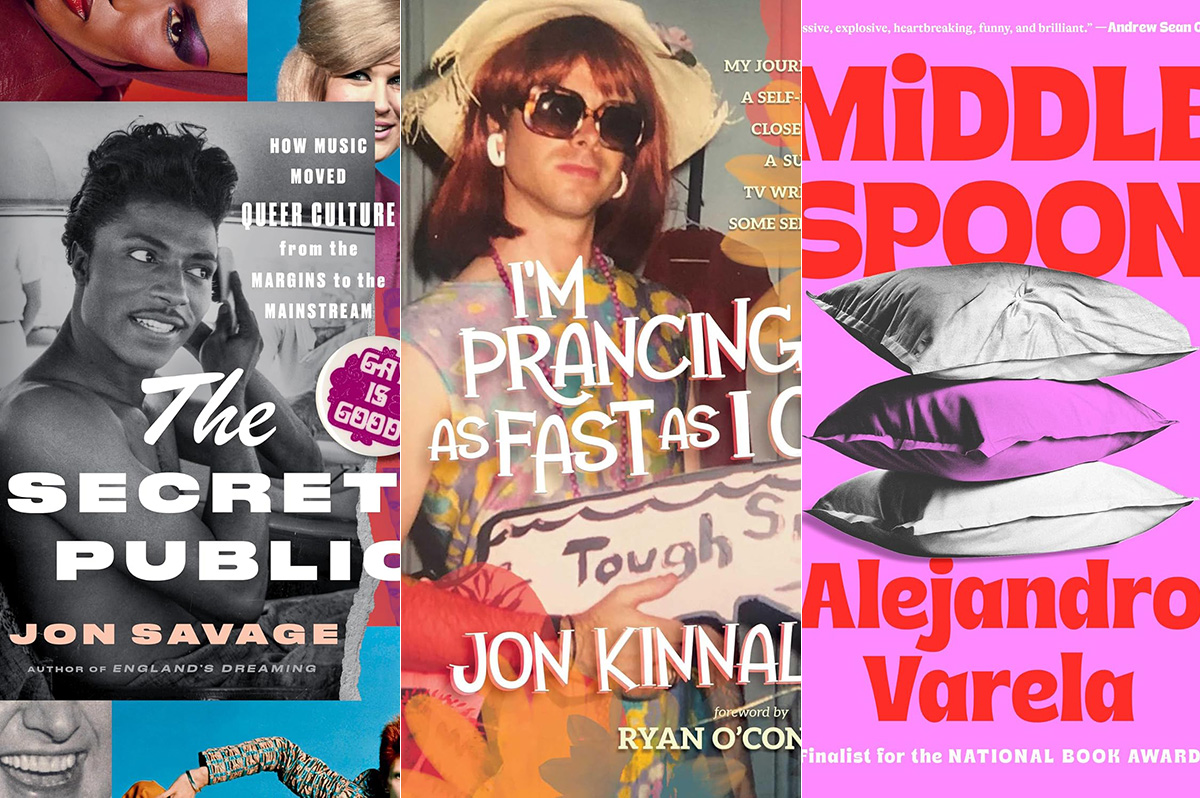
Santa will be very relieved.
You’ve taken most of the burden off him by making a list and checking it twice on his behalf. The gift-buying in your house is almost done – except for those few people who are just so darn hard to buy for. So what do you give to the person who has (almost) everything? You give them a good book, like maybe one of these.
Memoir and biography
The person who loves digging into a multi-level memoir will be happy unwrapping “Blessings and Disasters: A Story of Alabama” by Alexis Okeowo (Henry Holt). It’s a memoir about growing up Black in what was once practically ground zero for the Confederacy. It’s about inequality, it busts stereotypes, and yet it still oozes love of place. You can’t go wrong if you wrap it up with “Queen Mother: Black Nationalism, Reparations, and the Untold Story of Audley Moore” by Ashley D. Farmer (Pantheon). It’s a chunky book with a memoir with meaning and plenty of thought.
For the giftee on your list who loves to laugh, wrap up “In My Remaining Years” by Jean Grae (Flatiron Books). It’s part memoir, part comedy, a look back at the late-last-century, part how-did-you-get-to-middle-age-already? and all fun. Wrap it up with “Here We Go: Lessons for Living Fearlessly from Two Traveling Nanas” by Eleanor Hamby and Dr. Sandra Hazellip with Elisa Petrini (Viking). It’s about the adventures of two 80-something best friends who seize life by the horns – something your giftee should do, too.
If there’ll be someone at your holiday table who’s finally coming home this year, wrap up “How I Found Myself in the Midwest” by Steve Grove (Simon & Schuster). It’s the story of a Silicon Valley worker who gives up his job and moves with his family to Minnesota, which was once home to him. That was around the time the pandemic hit, George Floyd was murdered, and life in general had been thrown into chaos. How does someone reconcile what was with what is now? Pair it with “Homestand: Small Town Baseball and the Fight for the Soul of America” by Will Bardenwerper (Doubleday). It’s set in New York and but isn’t that small-town feel universal, no matter where it comes from?
Won’t the adventurer on your list be happy when they unwrap “I Live Underwater” by Max Gene Nohl (University of Wisconsin Press)? They will, when they realize that this book is by a former deep-sea diver, treasure hunter, and all-around daredevil who changed the way we look for things under water. Nohl died more than 60 years ago, but his never-before-published memoir is fresh and relevant and will be a fun read for the right person.
If celeb bios are your giftee’s thing, then look for “The Luckiest” by Kelly Cervantes (BenBella Books). It’s the Midwest-to-New-York-City story of an actress and her life, her marriage, and what she did when tragedy hit. Filled with grace, it’s a winner.
Your music lover won’t want to open any other gifts if you give “Only God Can Judge Me: The Many Lives of Tupac Shakur” by Jeff Pearlman (Mariner Books). It’s the story of the life, death, and everything in-between about this iconic performer, including the mythology that he left behind. Has it been three decades since Tupac died? It has, but your music lover never forgets. Wrap it up with “Point Blank (Quick Studies)” by Bob Dylan, text by Eddie Gorodetsky, Lucy Sante, and Jackie Hamilton (Simon & Schuster), a book of Dylan’s drawings and artwork. This is a very nice coffee-table size book that will be absolutely perfect for fans of the great singer and for folks who love art.
For the giftee who’s concerned with their fellow man, “The Lost and the Found: A True Story of Homelessness, Found Family and Second Chances” by Kevin Fagan (One Signal / Atria) may be the book to give. It’s a story of two “unhoused” people in San Francisco, one of the country’s wealthiest cities, and their struggles. There’s hope in this book, but also trouble and your giftee will love it.
For the person on your list who suffered loss this year, give “Pine Melody” by Stacey Meadows (Independently Published), a memoir of loss, grief, and healing while remembering the person gone.
LGBTQ fiction
For the mystery lover who wants something different, try “Crime Ink: Iconic,” edited by John Copenhaver and Salem West (Bywater Books), a collection of short stories inspired by “queer legends” and allies you know. Psychological thrillers, creepy crime, cozies, they’re here.
Novel lovers will want to curl up this winter with “Middle Spoon” by Alejandro Varela (Viking), a book about a man who appears to have it all, until his heart is broken and the fix for it is one he doesn’t quite understand and neither does anyone he loves.
LGBTQ studies – nonfiction
For the young man who’s struggling with issues of gender, “Before They Were Men” by Jacob Tobia (Harmony Books) might be a good gift this year. These essays on manhood in today’s world works to widen our conversations on the role politics and feminism play in understanding masculinity and how it’s time we open our minds.
If there’s someone on your gift list who had a tough growing-up (didn’t we all?), then wrap up “I’m Prancing as Fast as I Can” by Jon Kinnally (Permuted Press / Simon & Schuster). Kinnally was once an awkward kid but he grew up to be a writer for TV shows you’ll recognize. You can’t go wrong gifting a story like that. Better idea: wrap it up with “So Gay for You: Friendship, Found Family, & The Show That Started It All” by Leisha Hailey & Kate Moennig (St. Martin’s Press), a book about a little TV show that launched a BFF-ship.
Who doesn’t have a giftee who loves music? You sure do, so wrap up “The Secret Public: How Music Moved Queer Culture from the Margins to the Mainstream” by Jon Savage (Liveright). Nobody has to tell your giftee that queer folk left their mark on music, but they’ll love reading the stories in this book and knowing what they didn’t know.
The Blade may receive commissions from qualifying purchases made via this post.
Theater
Studio’s ‘Mother Play’ draws from lesbian playwright’s past
A poignant memory piece laced with sadness and wry laughs
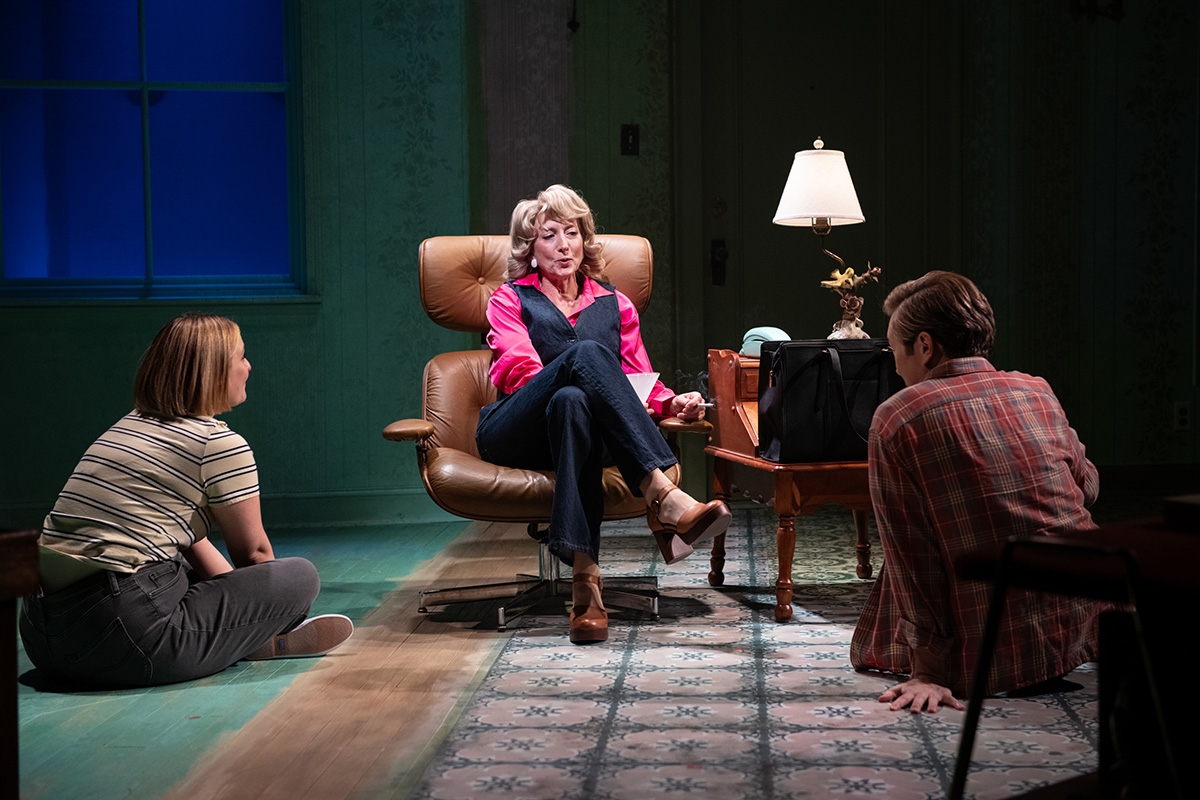
‘The Mother Play’
Through Jan. 4
Studio Theatre
1501 14th St., N.W.
$42 – $112
Studiotheatre.org
“The Mother Play” isn’t the first work by Pulitzer Prize-winning lesbian playwright Paula Vogel that draws from her past. It’s just the most recent.
Currently enjoying an extended run at Studio Theatre, “The Mother Play,” (also known as “The Mother Play: A Play in Five Evictions,” or more simply, “Mother Play”) is a 90-minute powerful and poignant memory piece laced with sadness and wry laughs.
The mother in question is Phyllis Herman (played exquisitely by Kate Eastwood Norris), a divorced government secretary bringing up two children under difficult circumstances. When we meet them it’s 1964 and the family is living in a depressing subterranean apartment adjacent to the building’s trash room.
Phyllis isn’t exactly cut out for single motherhood; an alcoholic chain-smoker with two gay offspring, Carl and Martha, both in their early teens, she seems beyond her depth.
In spite (or because of) the challenges, things are never dull in the Herman home. Phyllis is warring with landlords, drinking, or involved in some other domestic intrigue. At the same time, Carl is glued to books by authors like Jane Austen, and queer novelist Lytton Strachey, while Martha is charged with topping off mother’s drinks, not a mean feat.
Despite having an emotionally and physically withholding parent, adolescent Martha is finding her way. Fortunately, she has nurturing older brother Carl (the excellent Stanley Bahorek) who introduces her to queer classics like “The Well of Loneliness” by Radclyffe Hall, and encourages Martha to pursue lofty learning goals.
Zoe Mann’s Martha is just how you might imagine the young Vogel – bright, searching, and a tad awkward.
As the play moves through the decades, Martha becomes an increasingly confident young lesbian before sliding comfortably into early middle age. Over time, her attitude toward her mother becomes more sympathetic. It’s a convincing and pleasing performance.
Phyllis is big on appearances, mainly her own. She has good taste and a sharp eye for thrift store and Goodwill finds including Chanel or a Von Furstenberg wrap dress (which looks smashing on Eastwood Norris, by the way), crowned with the blonde wig of the moment.
Time and place figure heavily into Vogel’s play. The setting is specific: “A series of apartments in Prince George’s and Montgomery County from 1964 to the 21st century, from subbasement custodial units that would now be Section 8 housing to 3-bedroom units.”
Krit Robinson’s cunning set allows for quick costume and prop changes as decades seamlessly move from one to the next. And if by magic, projection designer Shawn Boyle periodically covers the walls with scurrying roaches, a persistent problem for these renters.
Margot Bordelon directs with sensitivity and nuance. Her take on Vogel’s tragicomedy hits all the marks.
Near the play’s end, there’s a scene sometimes referred to as “The Phyllis Ballet.” Here, mother sits onstage silently in front of her dressing table mirror. She is removed of artifice and oozes a mixture of vulnerability but not without some strength. It’s longish for a wordless scene, but Bordelon has paced it perfectly.
When Martha arranges a night of family fun with mom and now out and proud brother at Lost and Found (the legendary D.C. gay disco), the plan backfires spectacularly. Not long after, Phyllis’ desire for outside approval resurfaces tenfold, evidenced by extreme discomfort when Carl, her favorite child, becomes visibly ill with HIV/AIDS symptoms.
Other semi-autobiographical plays from the DMV native’s oeuvre include “The Baltimore Waltz,” a darkly funny, yet moving piece written in memory of her brother (Carl Vogel), who died of AIDS in 1988. The playwright additionally wrote “How I Learned to Drive,” an acclaimed play heavily inspired by her own experiences with sexual abuse as a teenager.
“The Mother Play” made its debut on Broadway in 2024, featuring Jessica Lange in the eponymous role, earning her a Tony Award nomination.
Like other real-life matriarch inspired characters (Mary Tyrone, Amanda Wingfield, Violet Weston to name a few) Phyllis Herman seems poised to join that pantheon of complicated, women.

